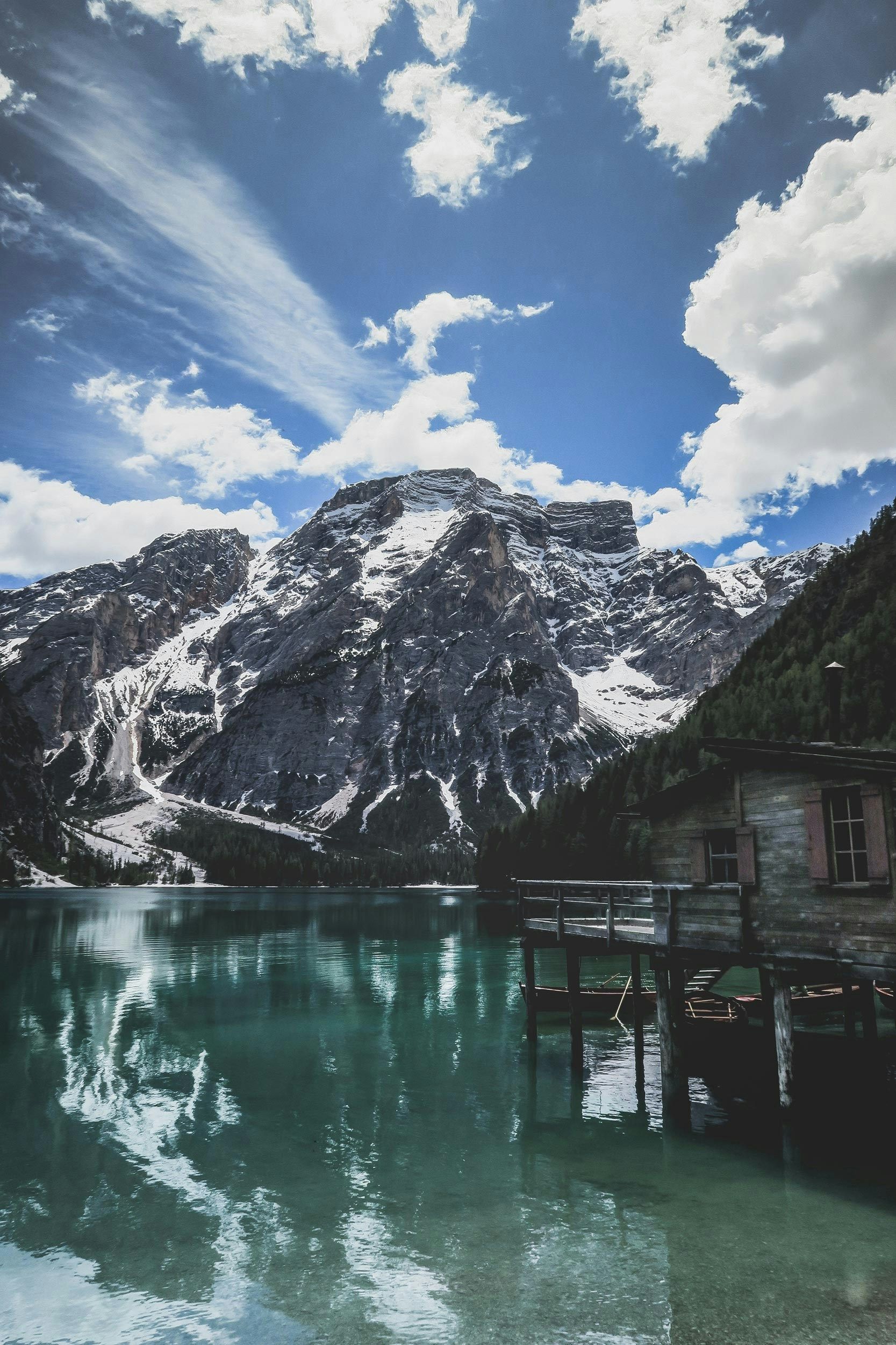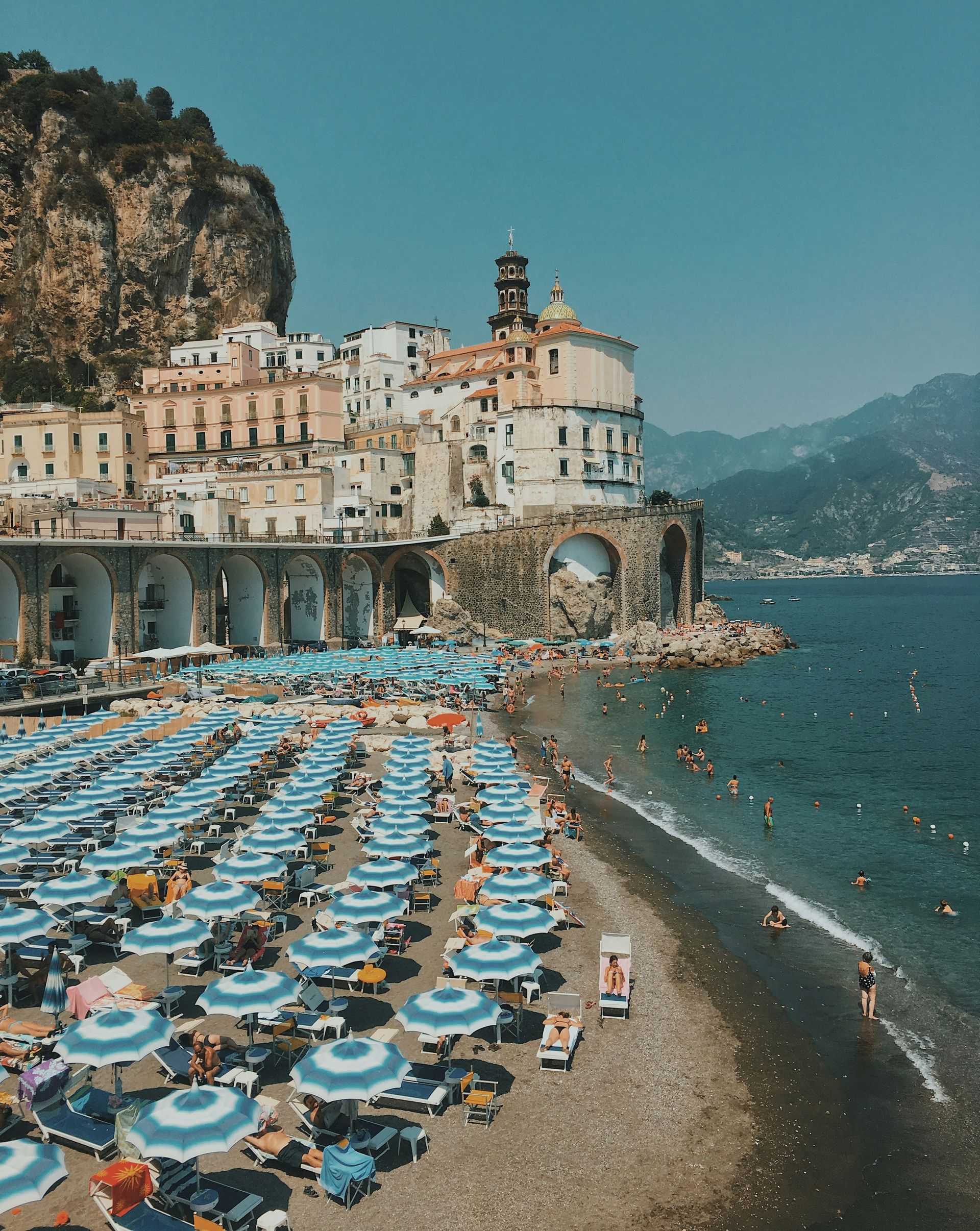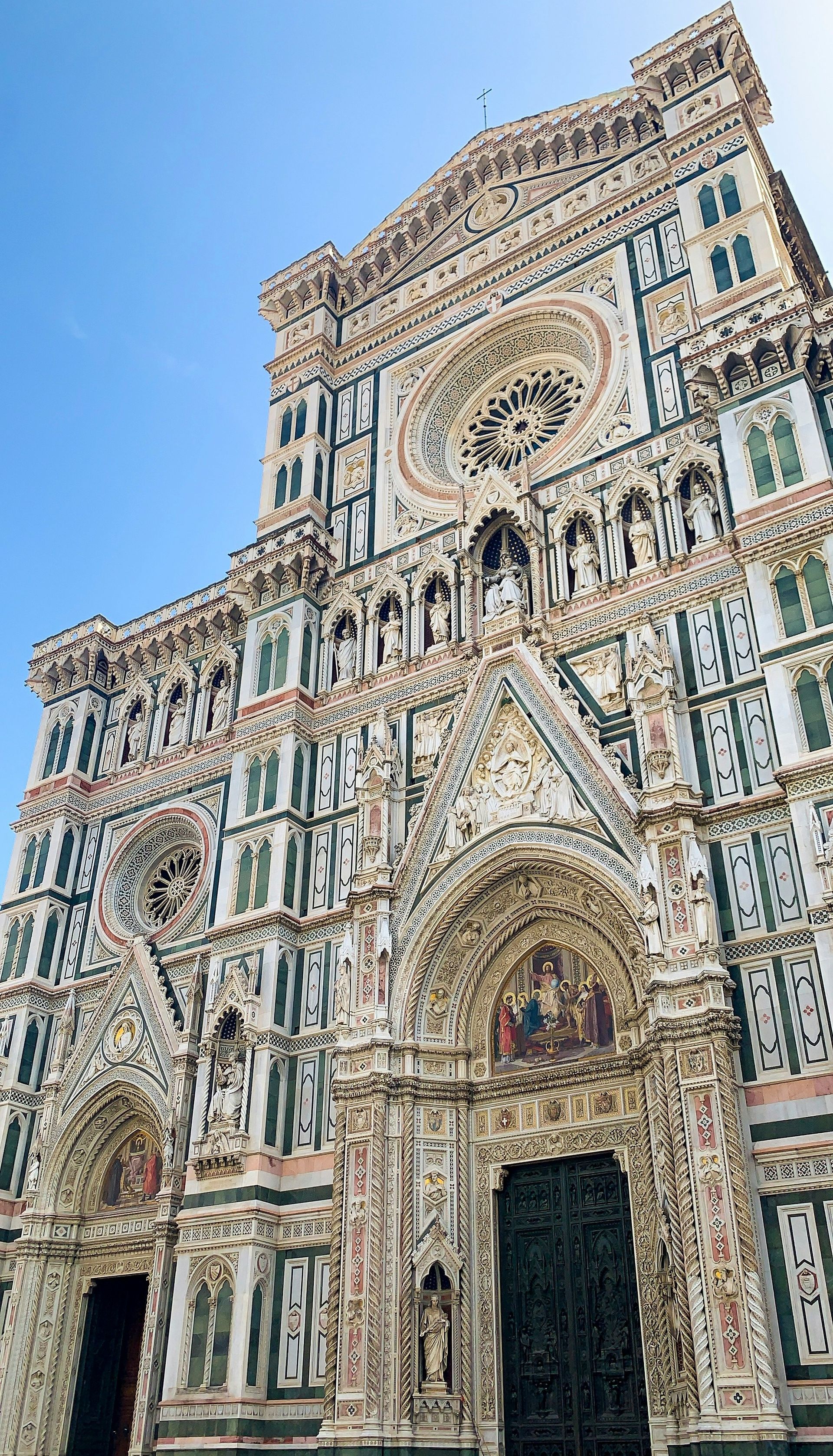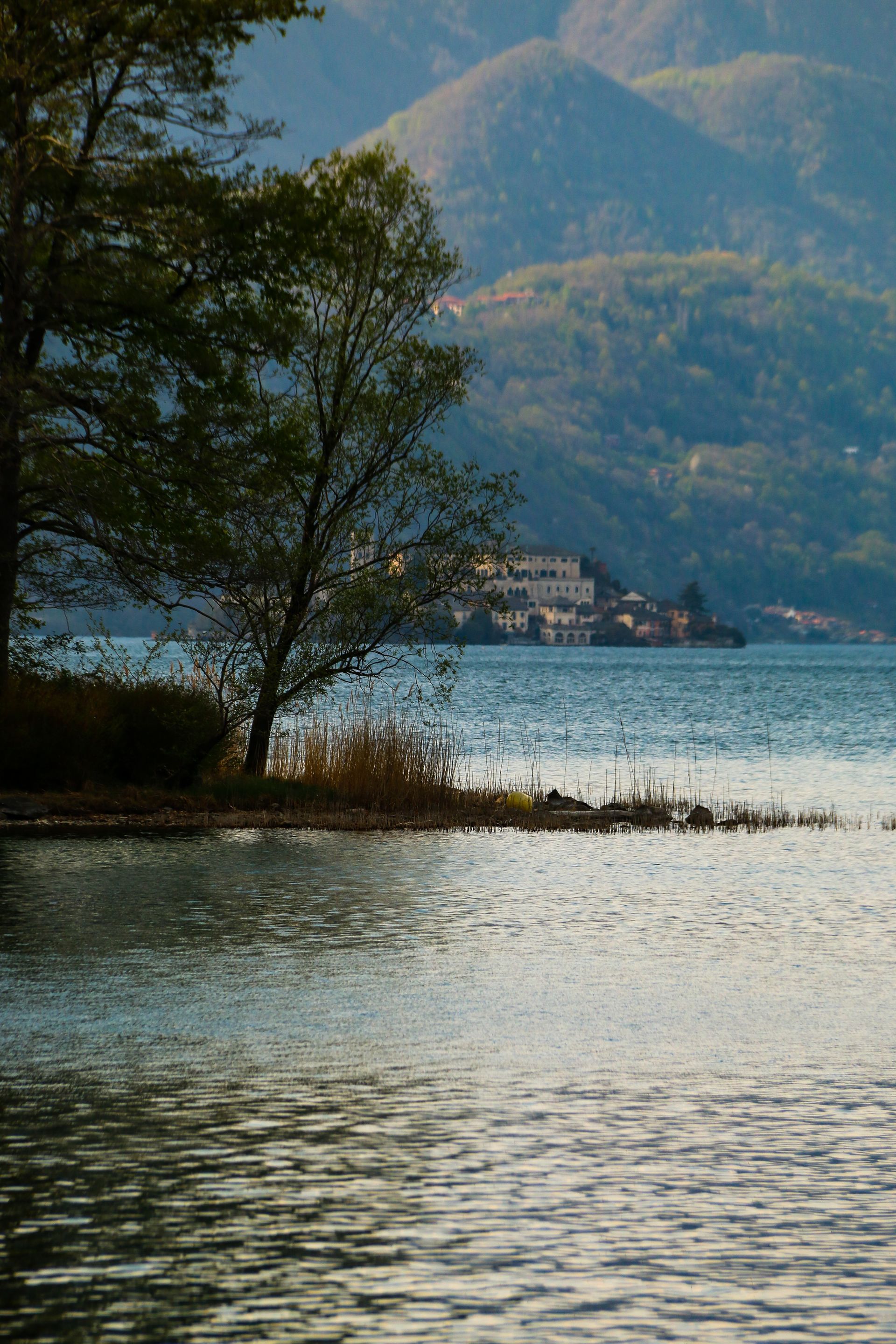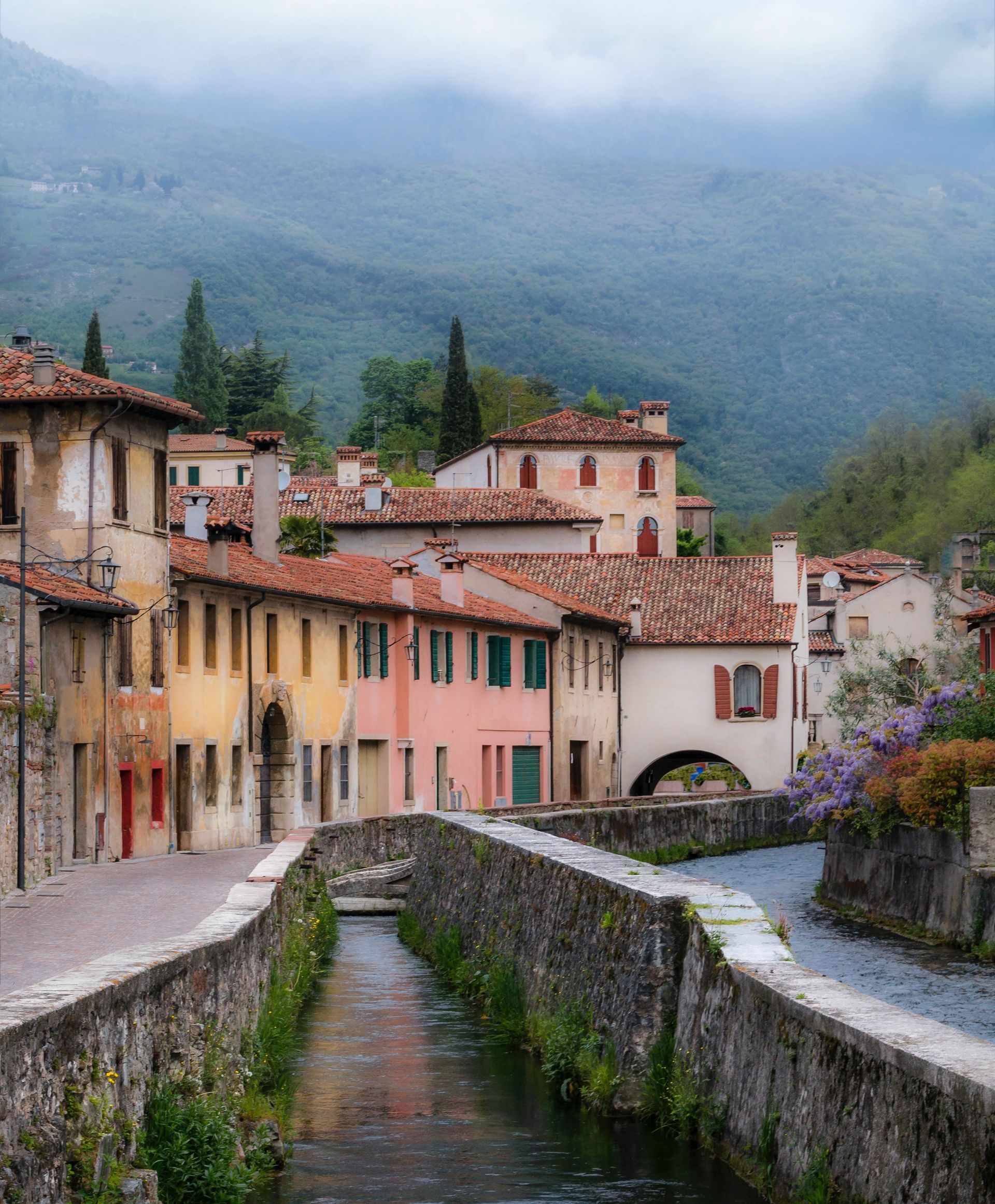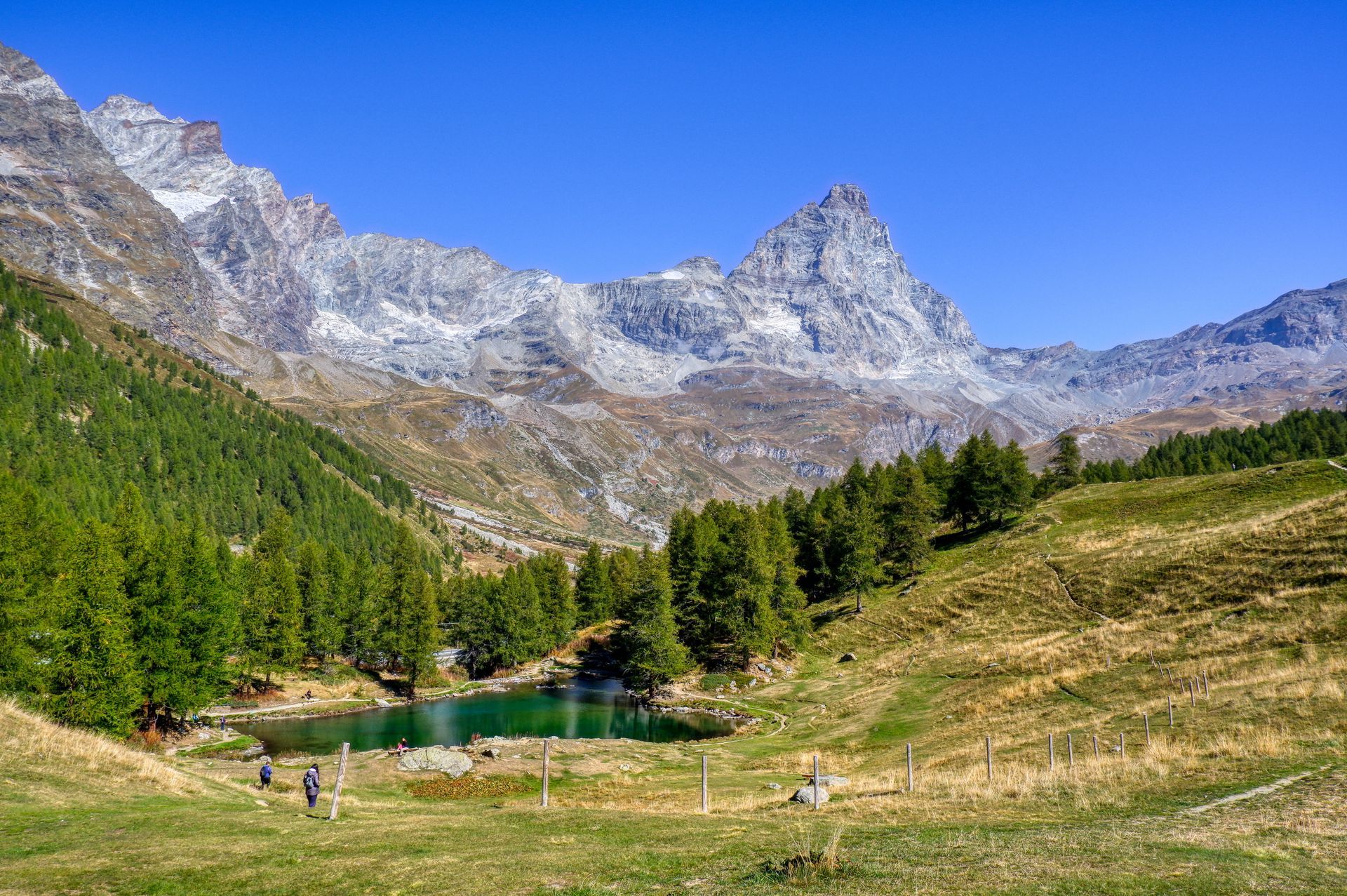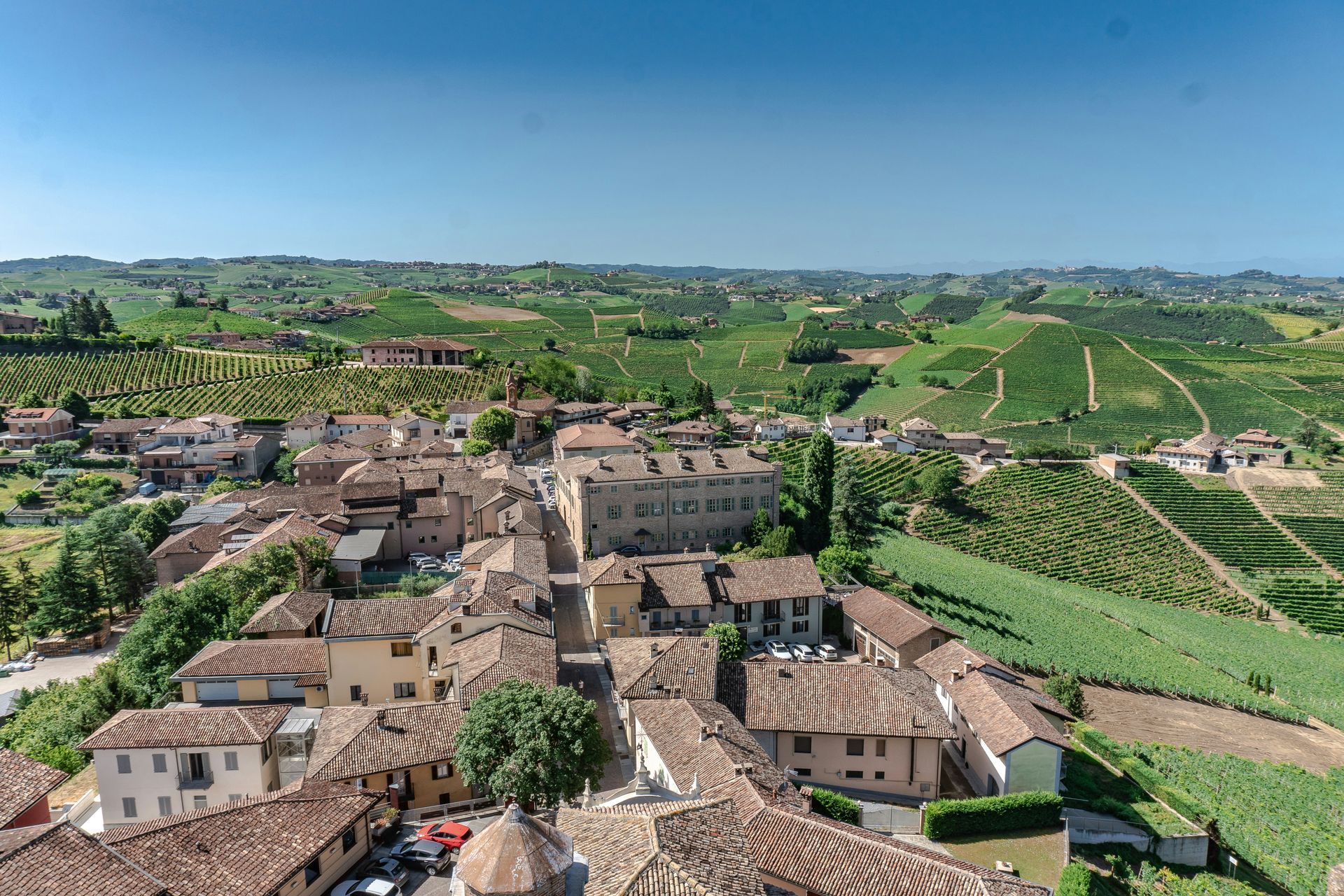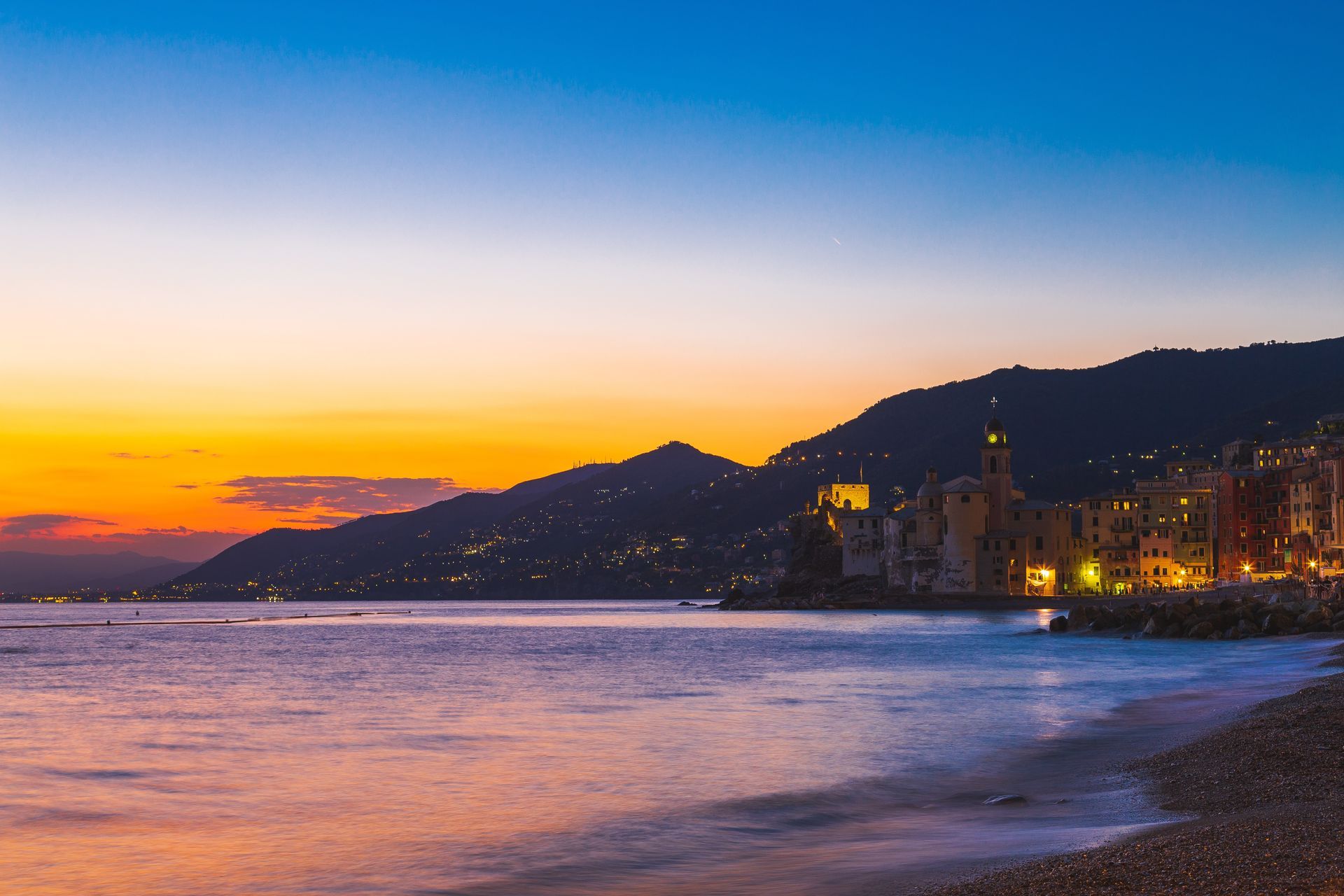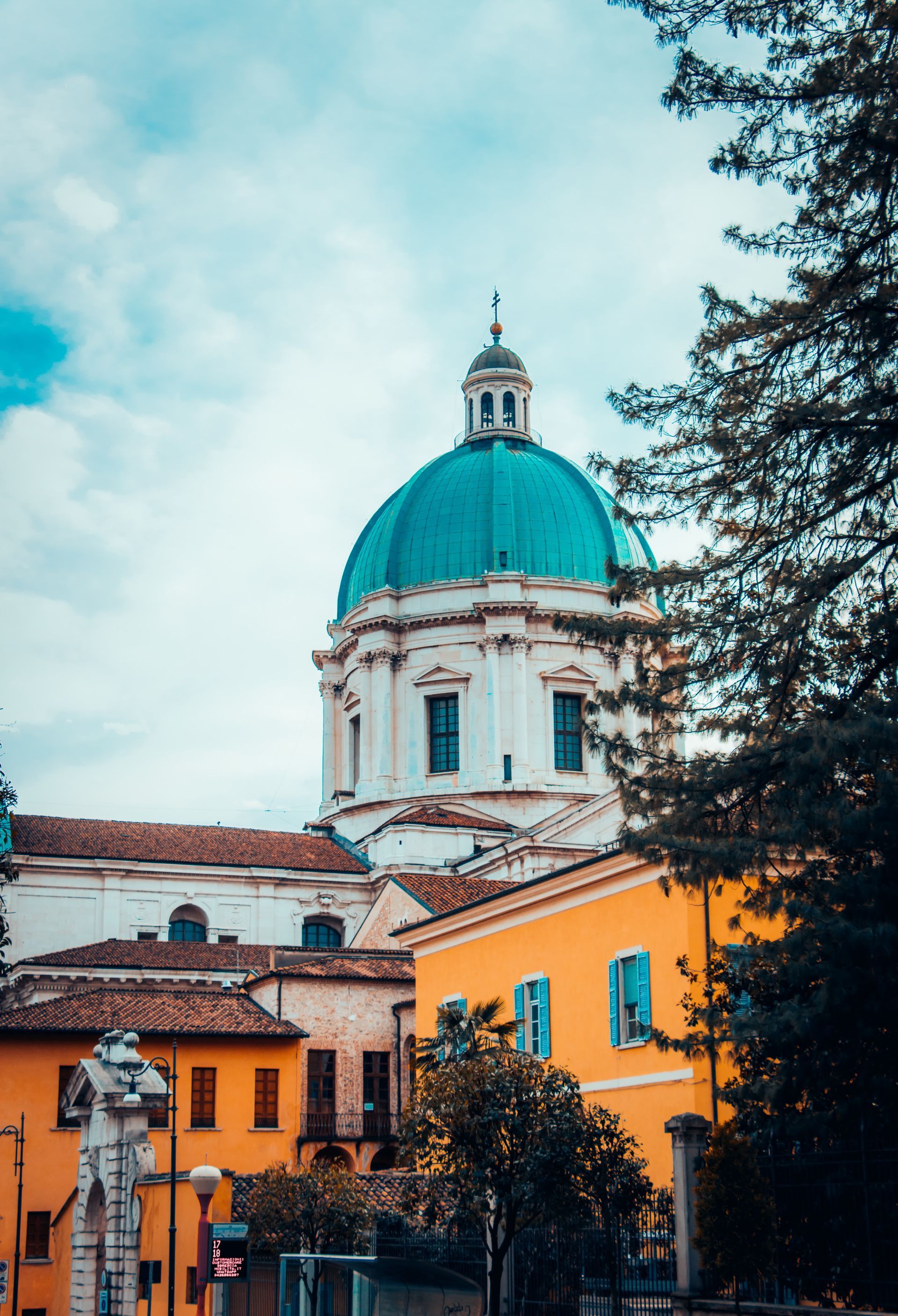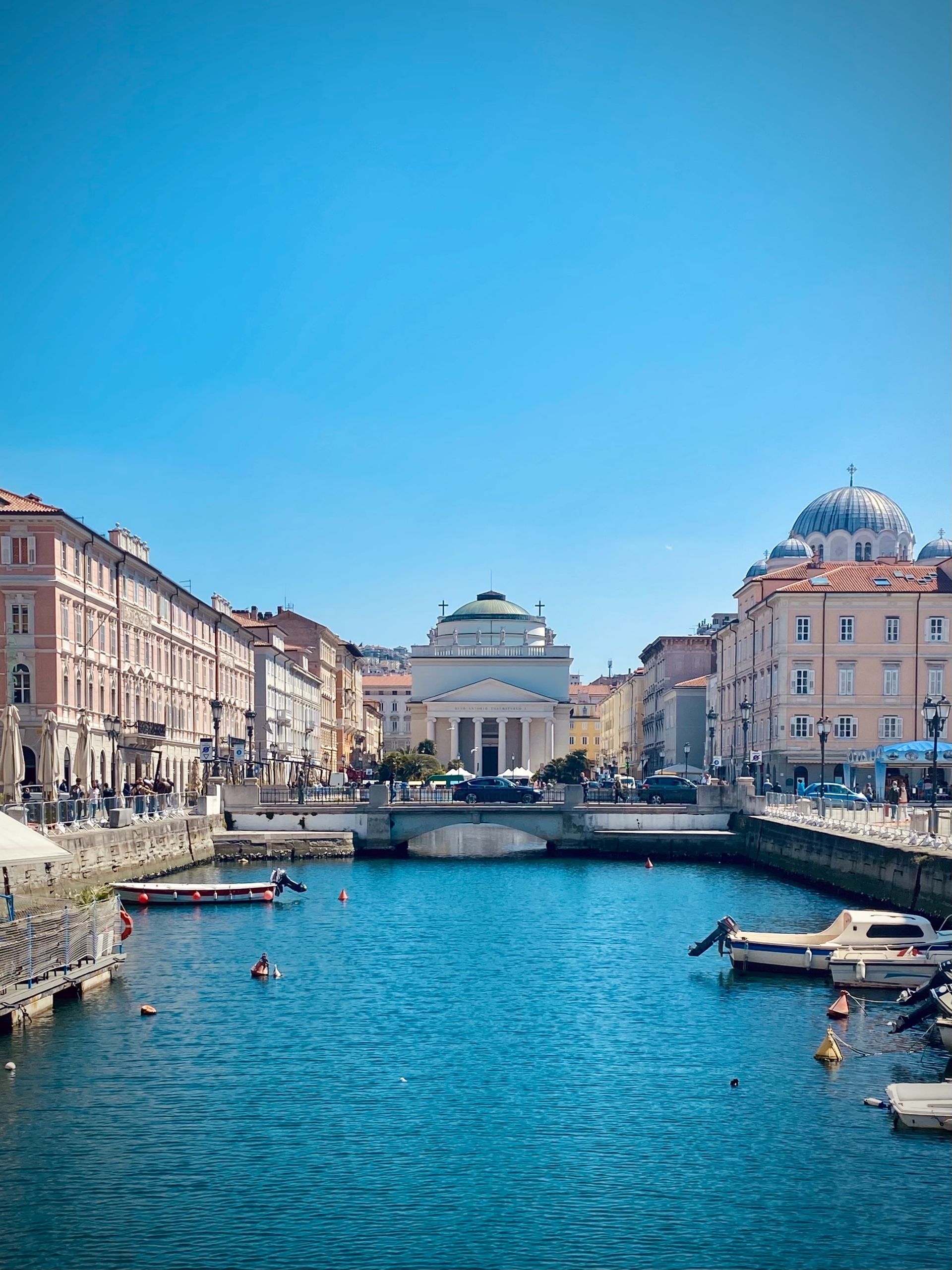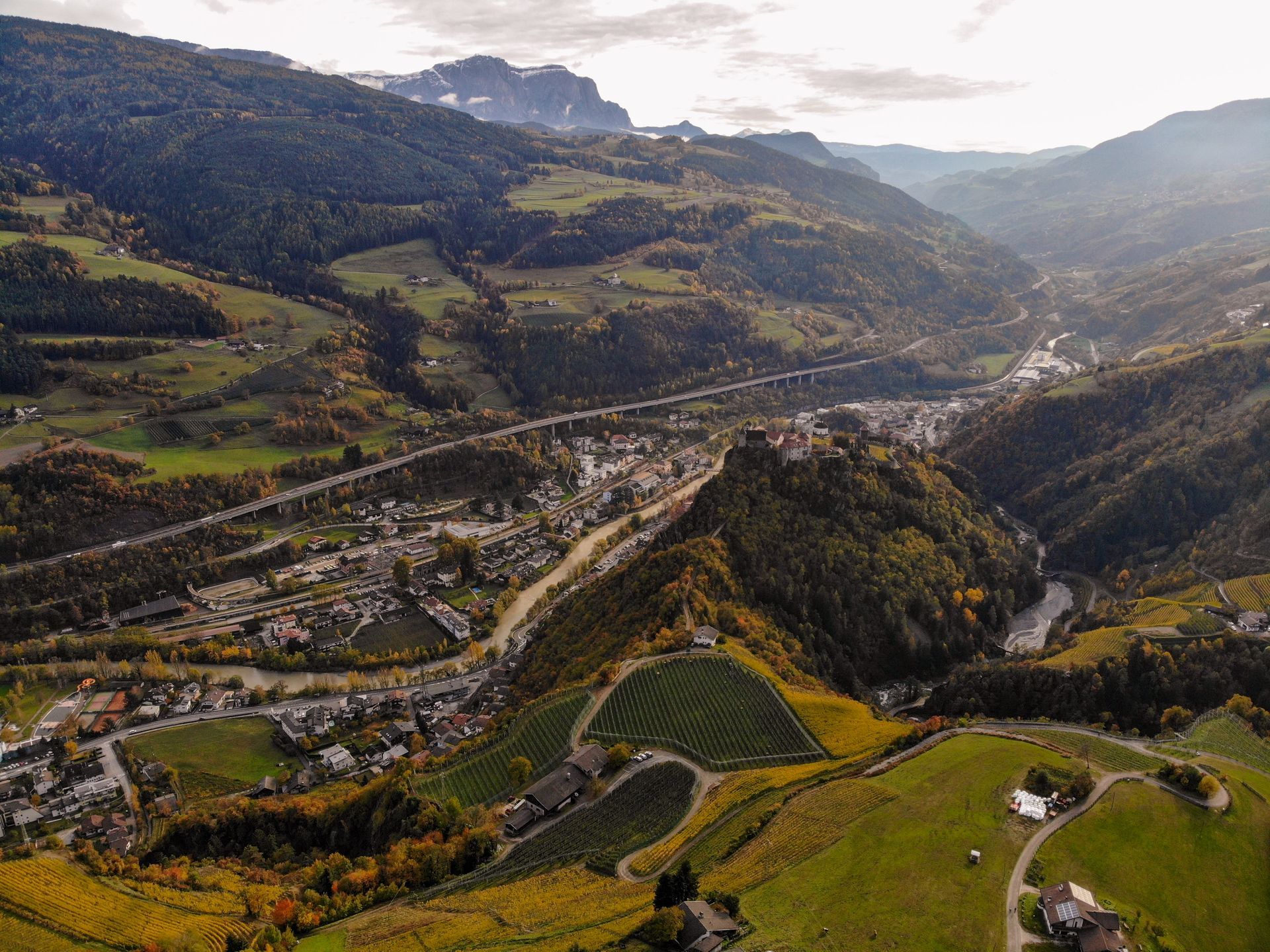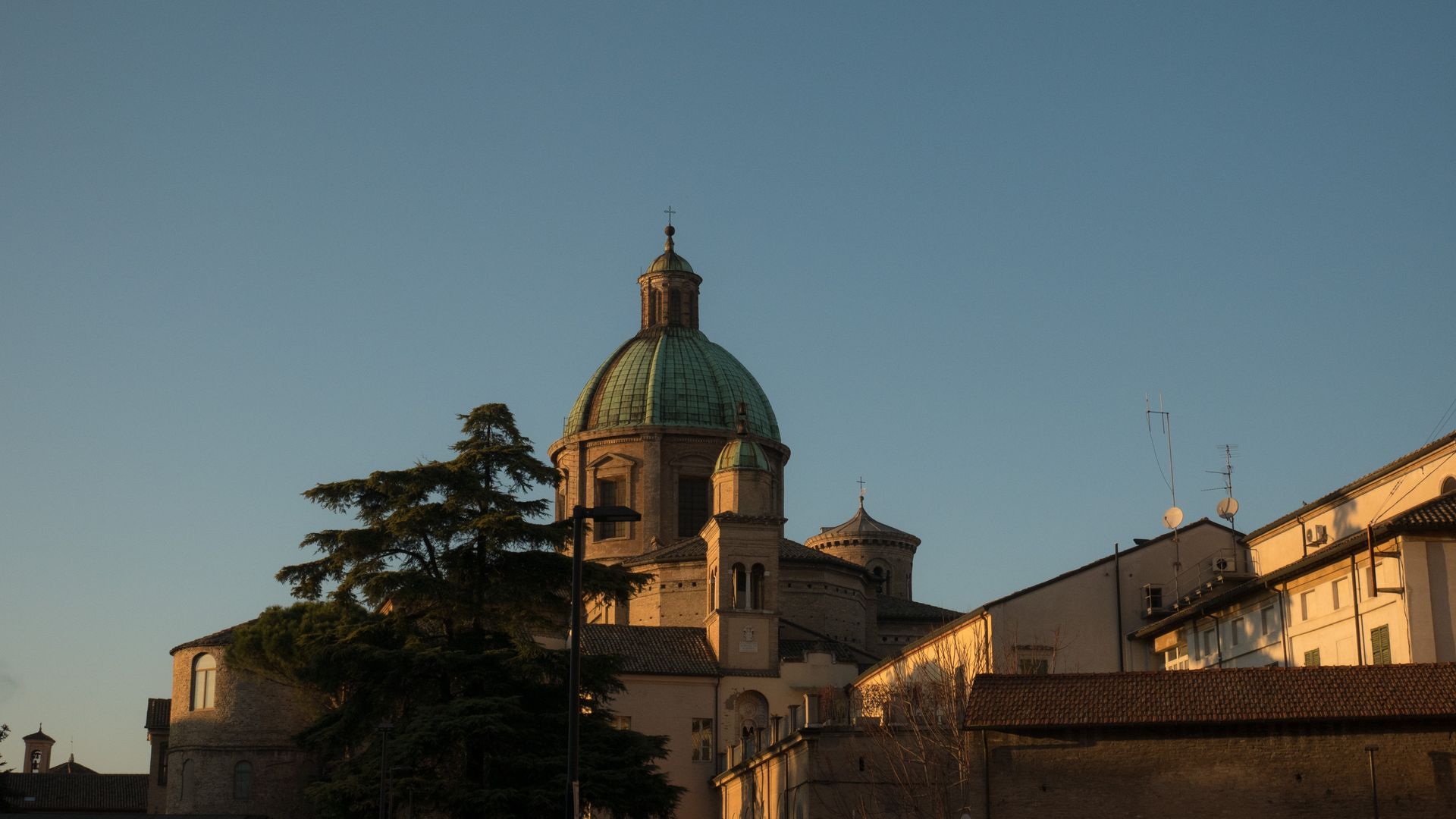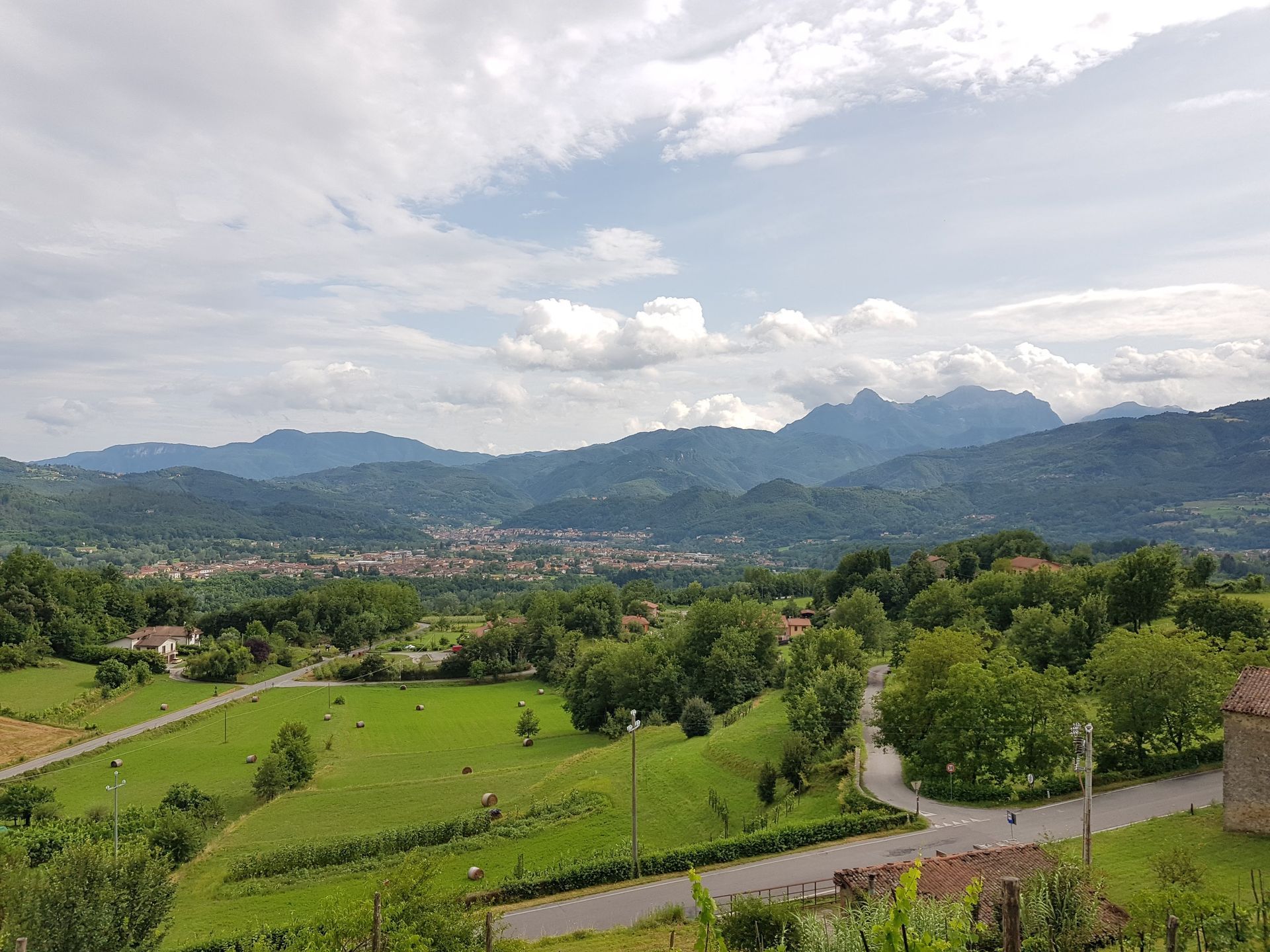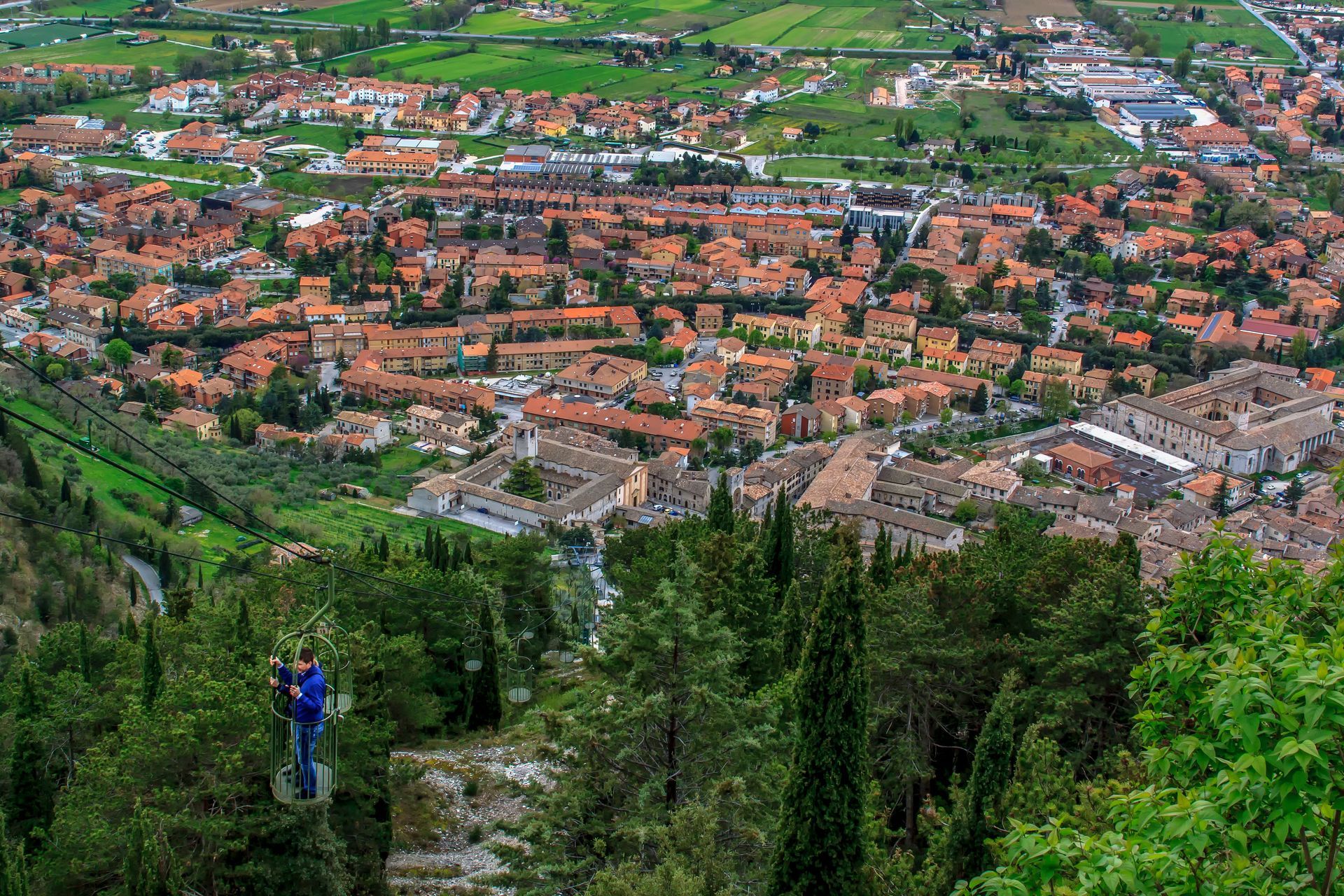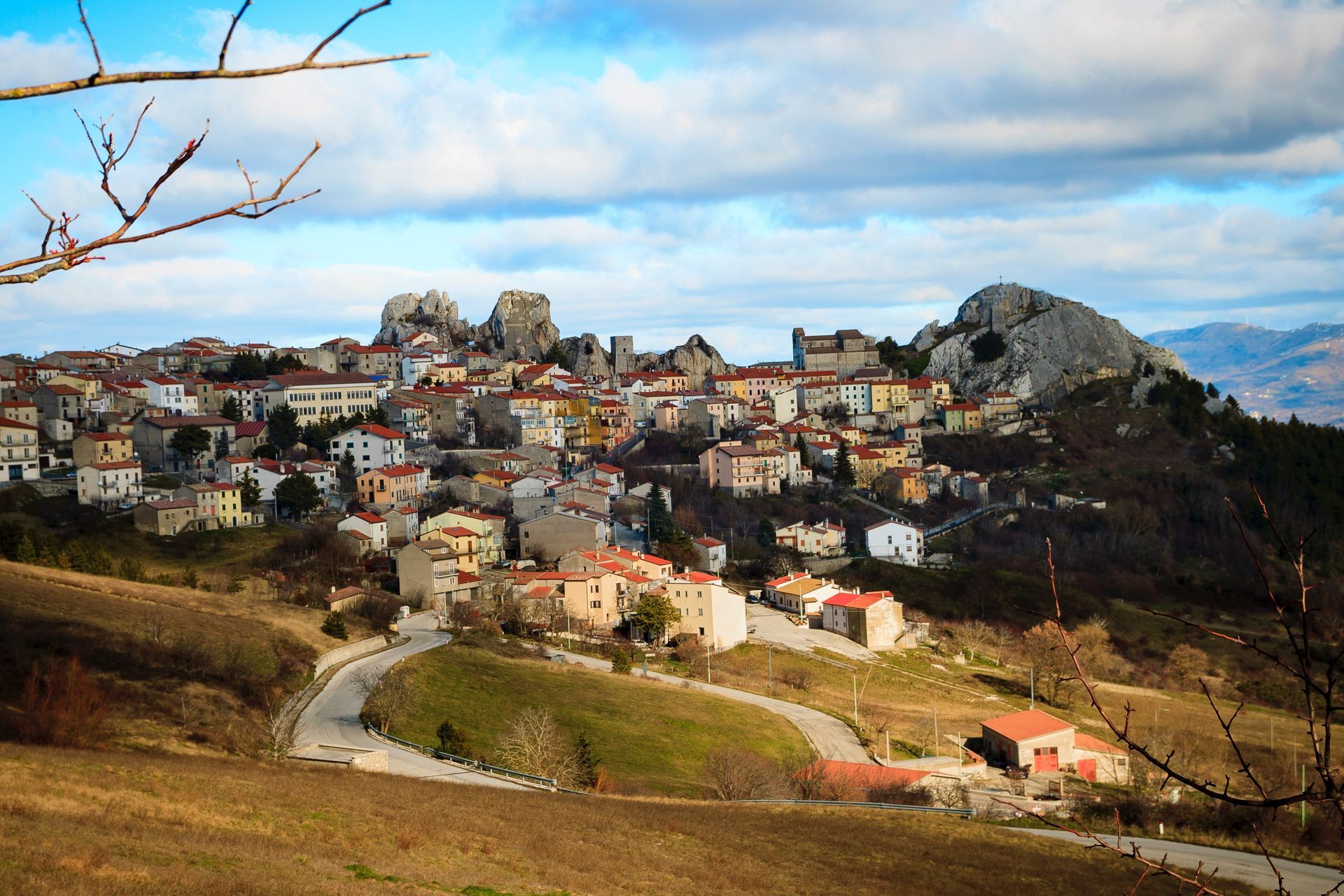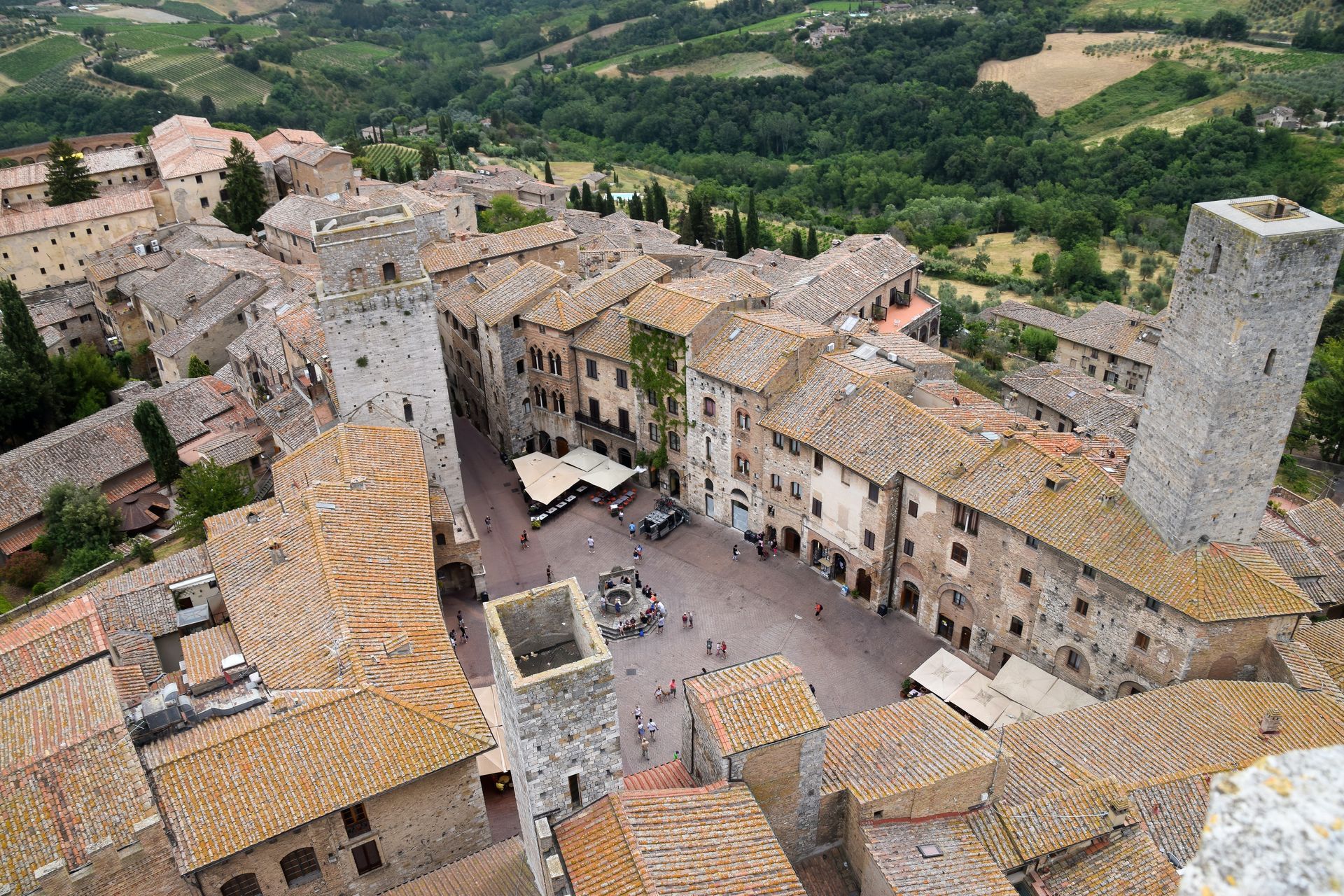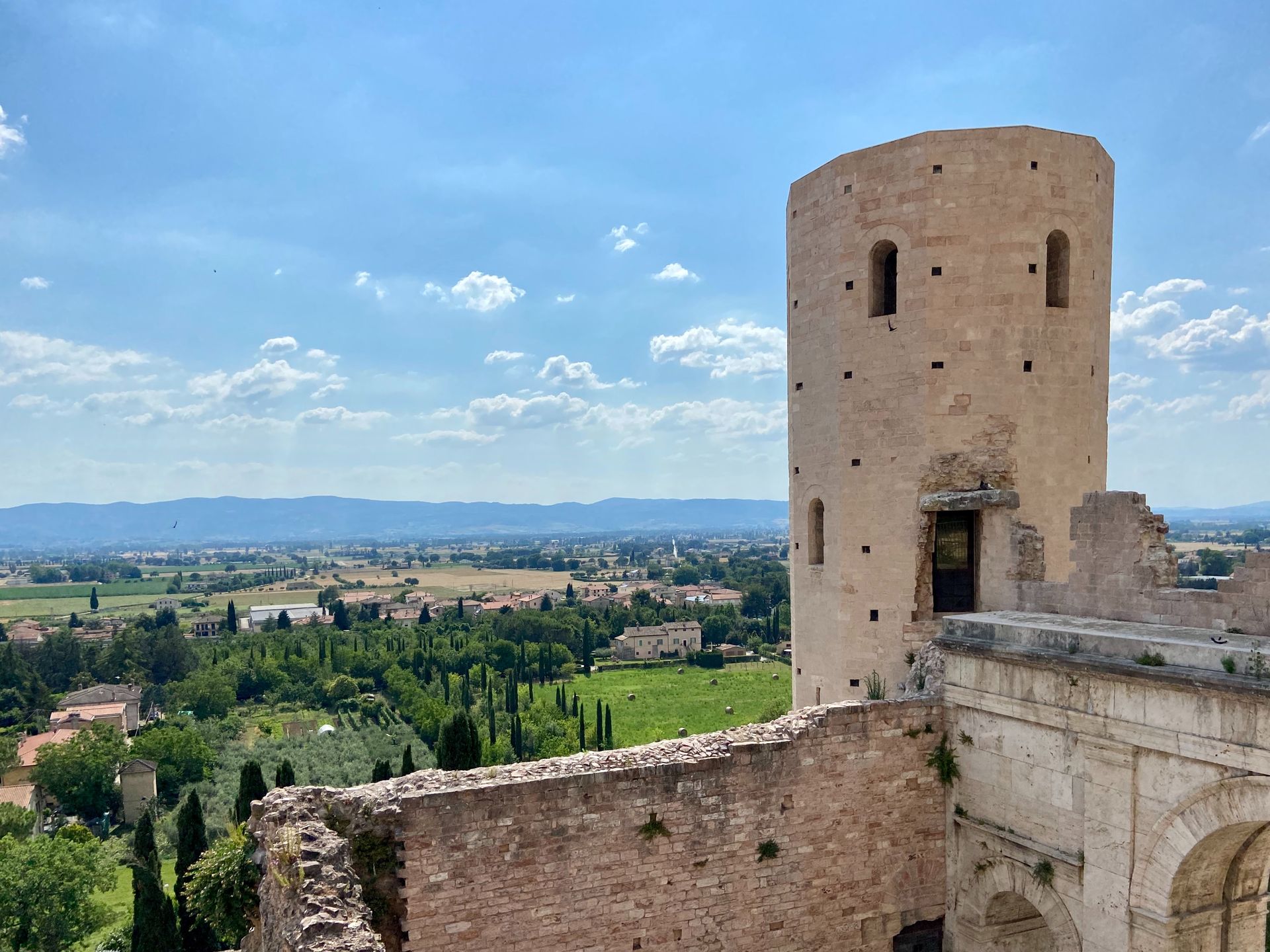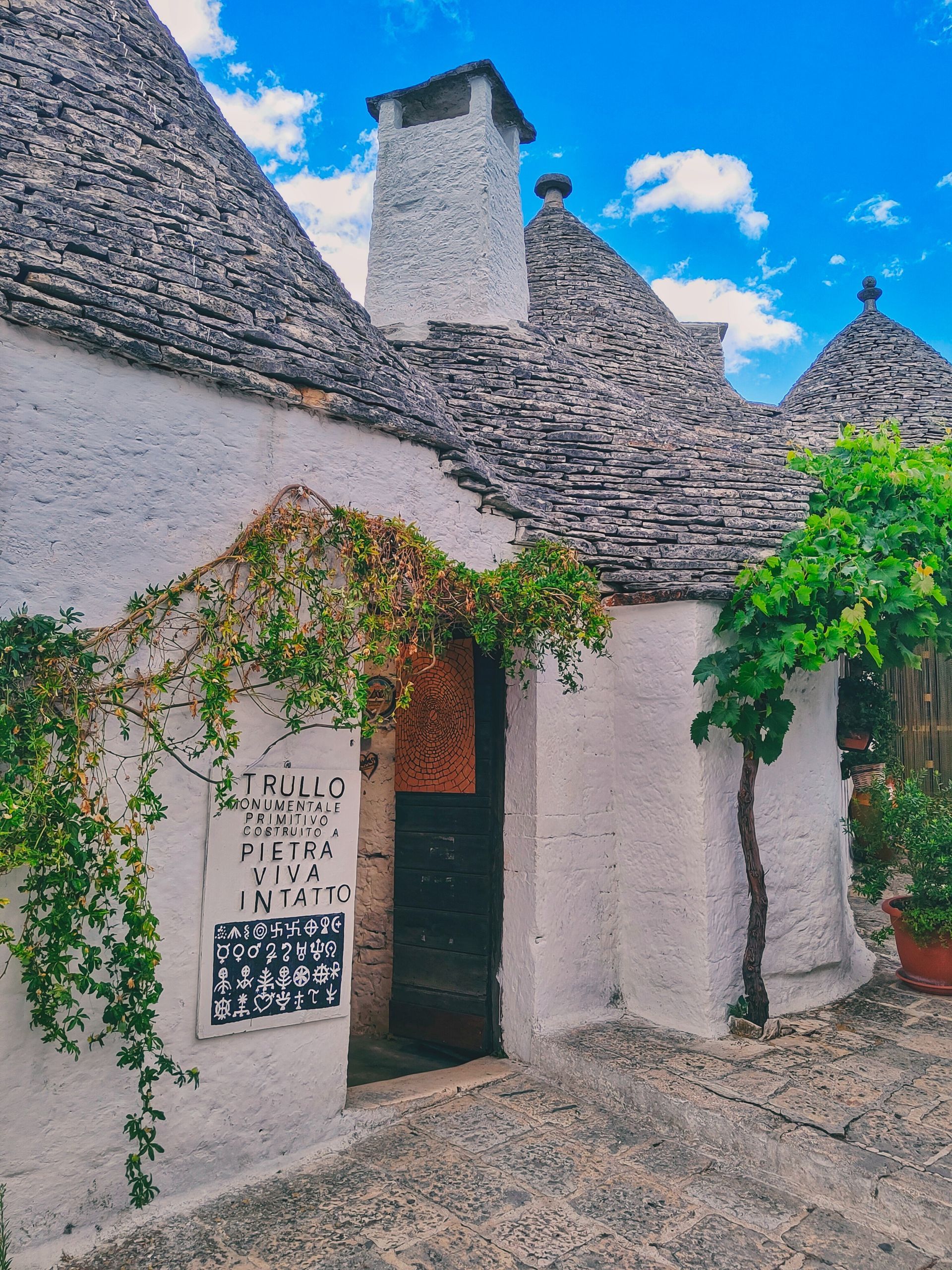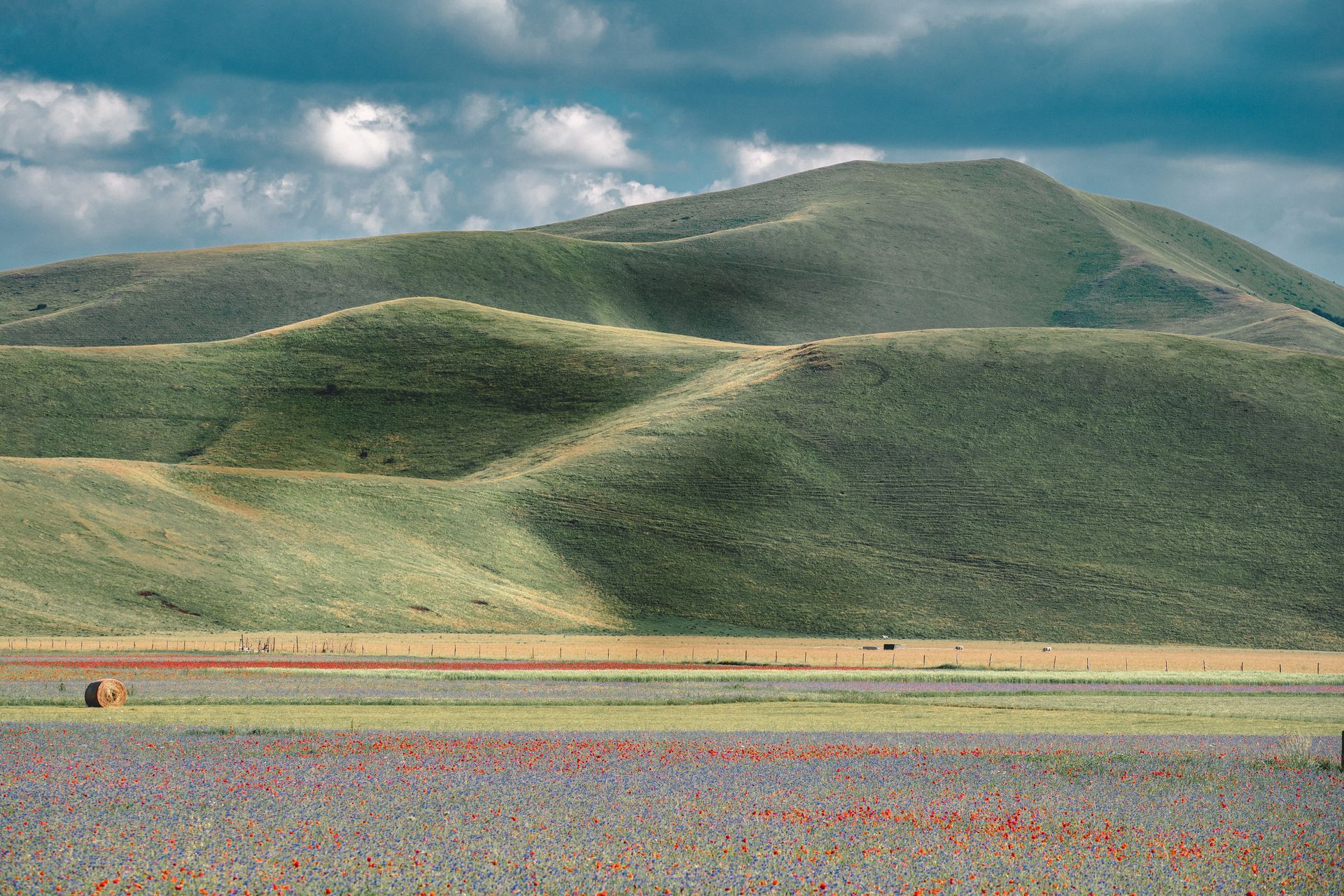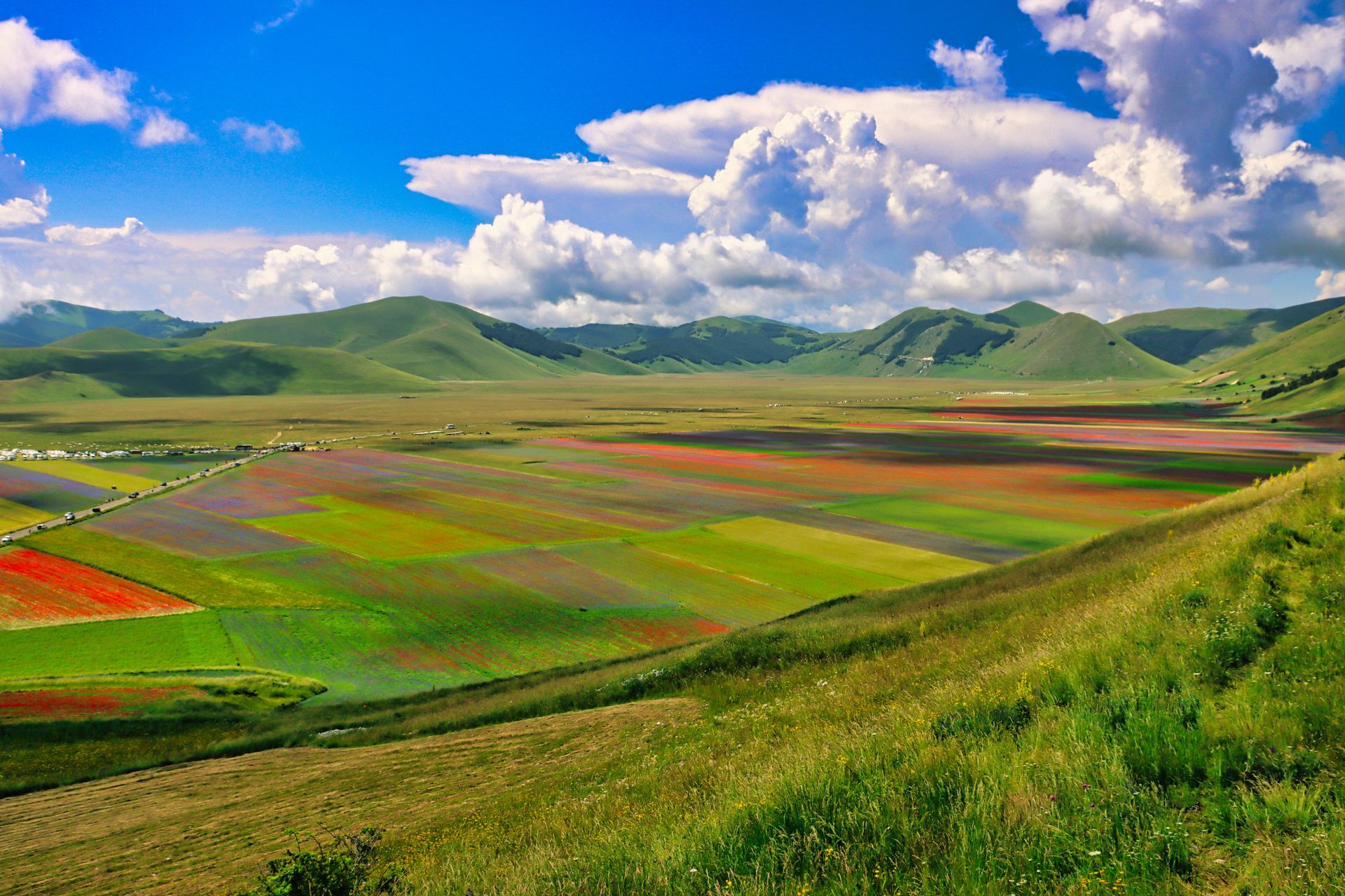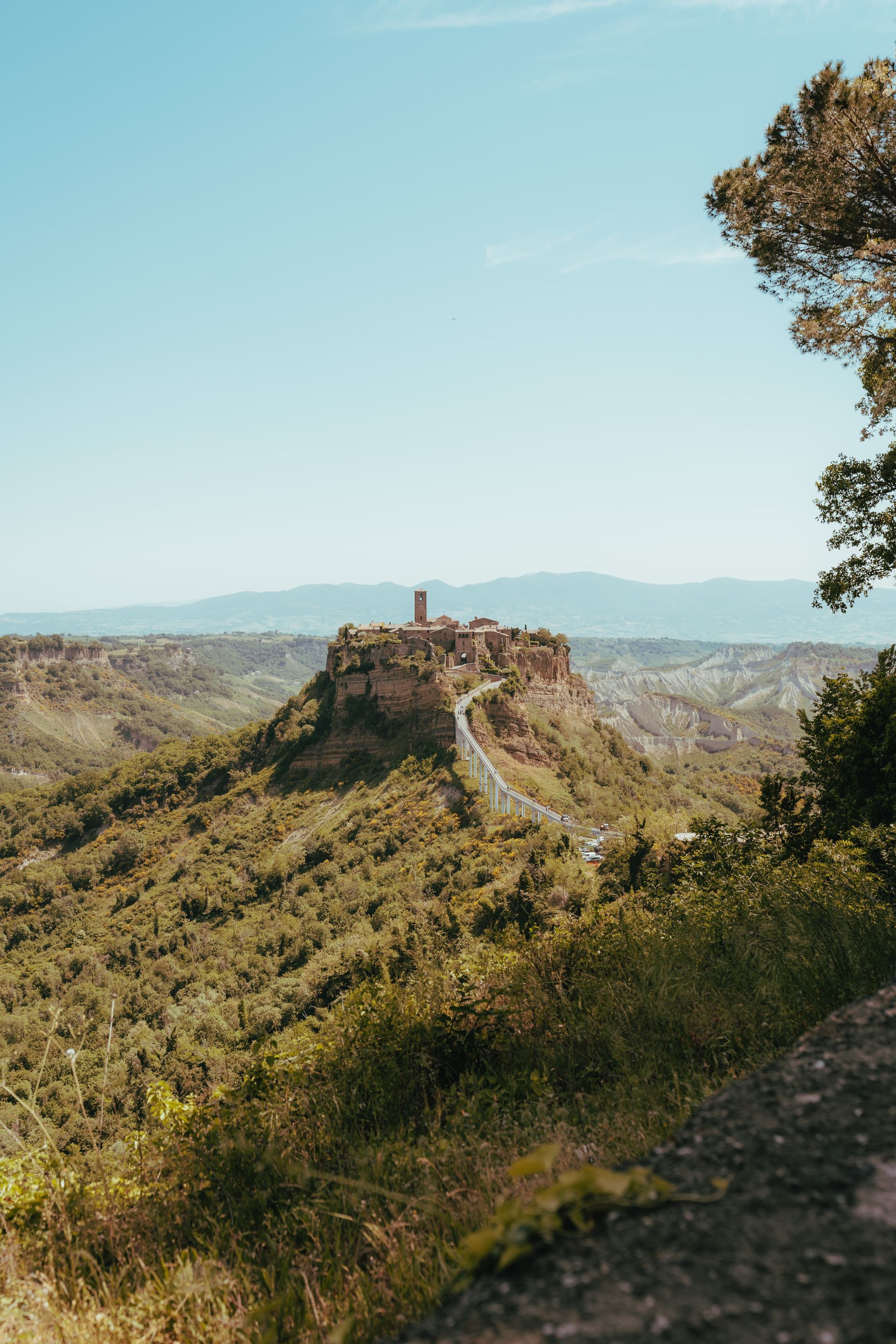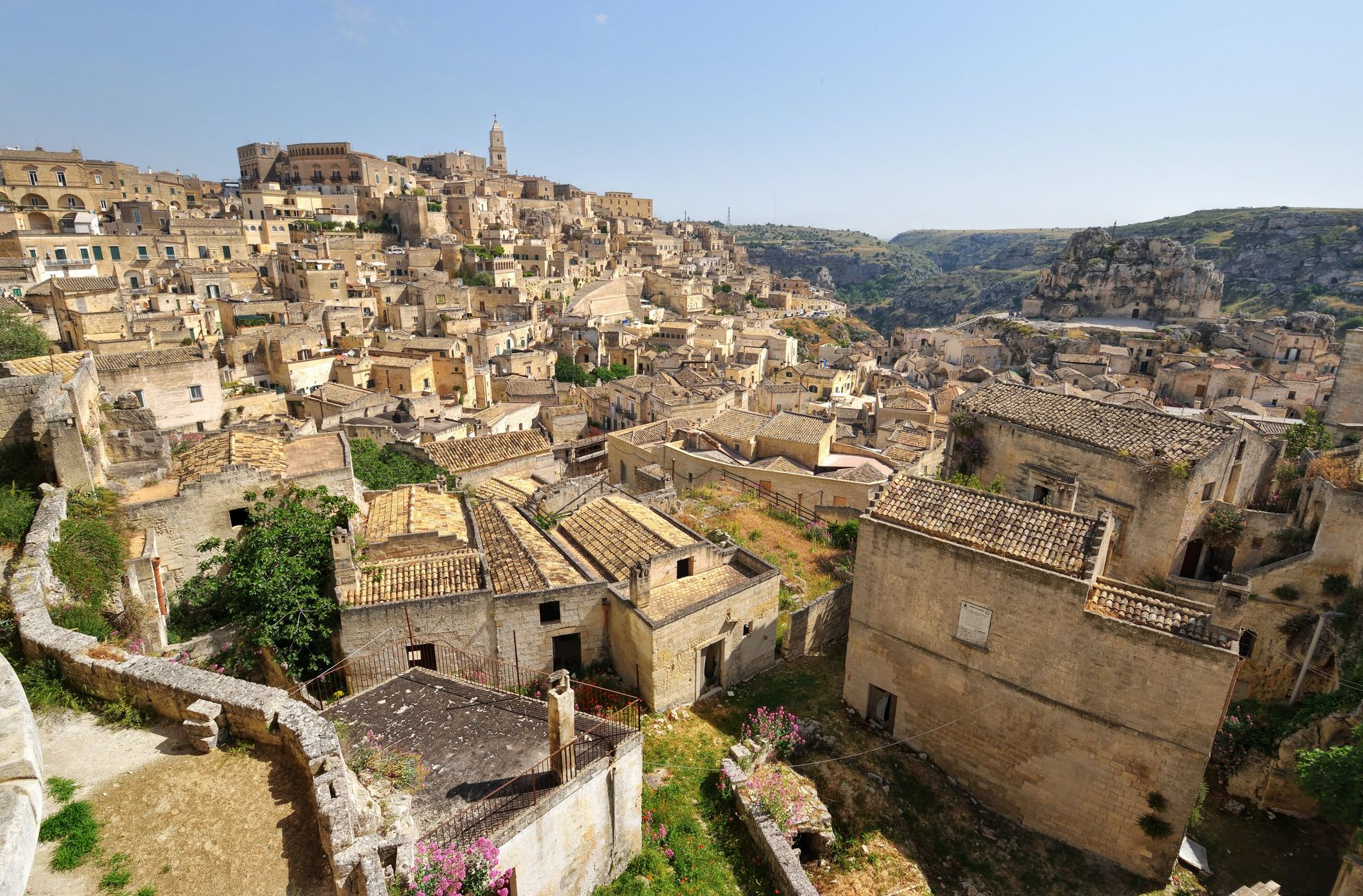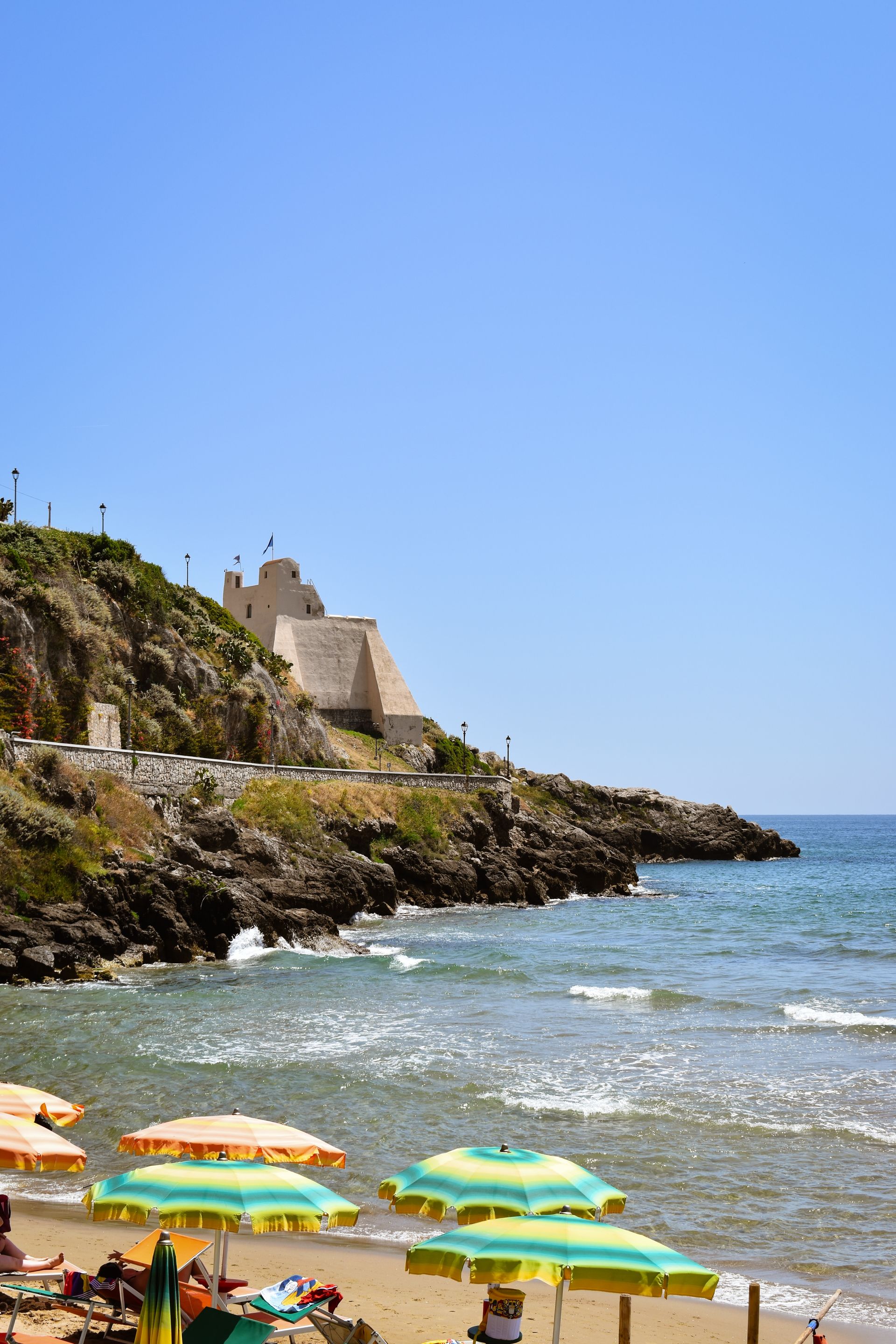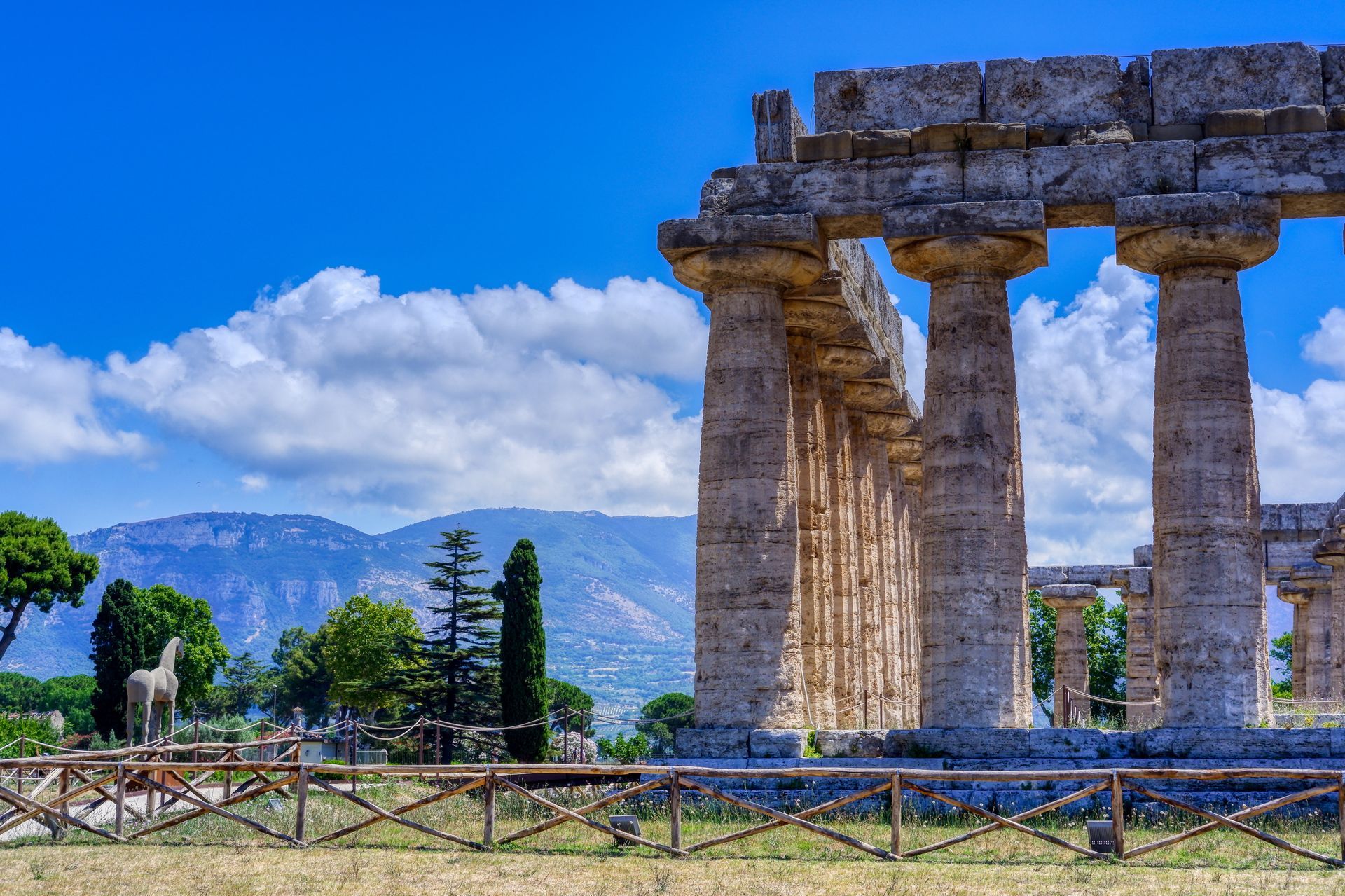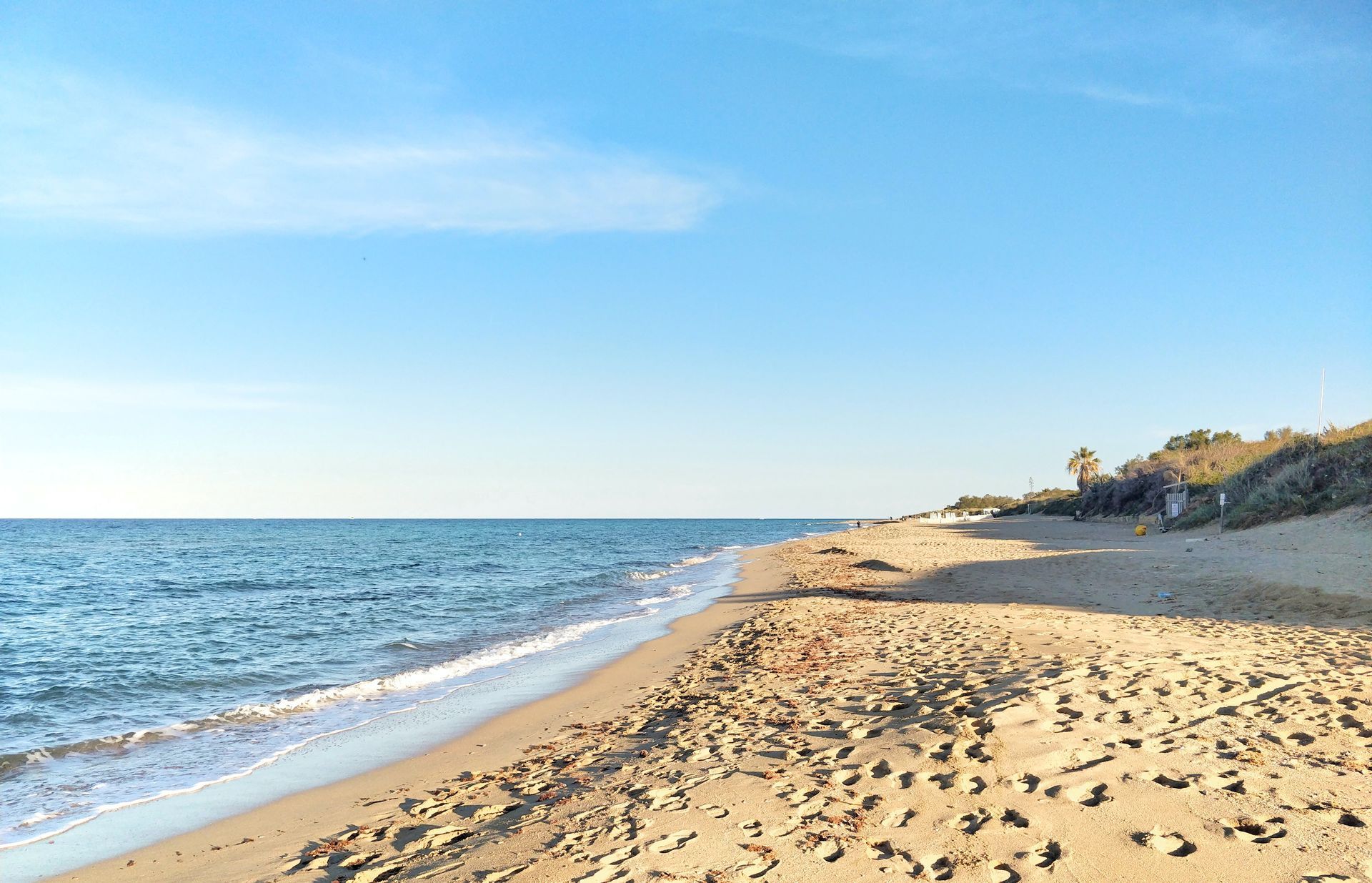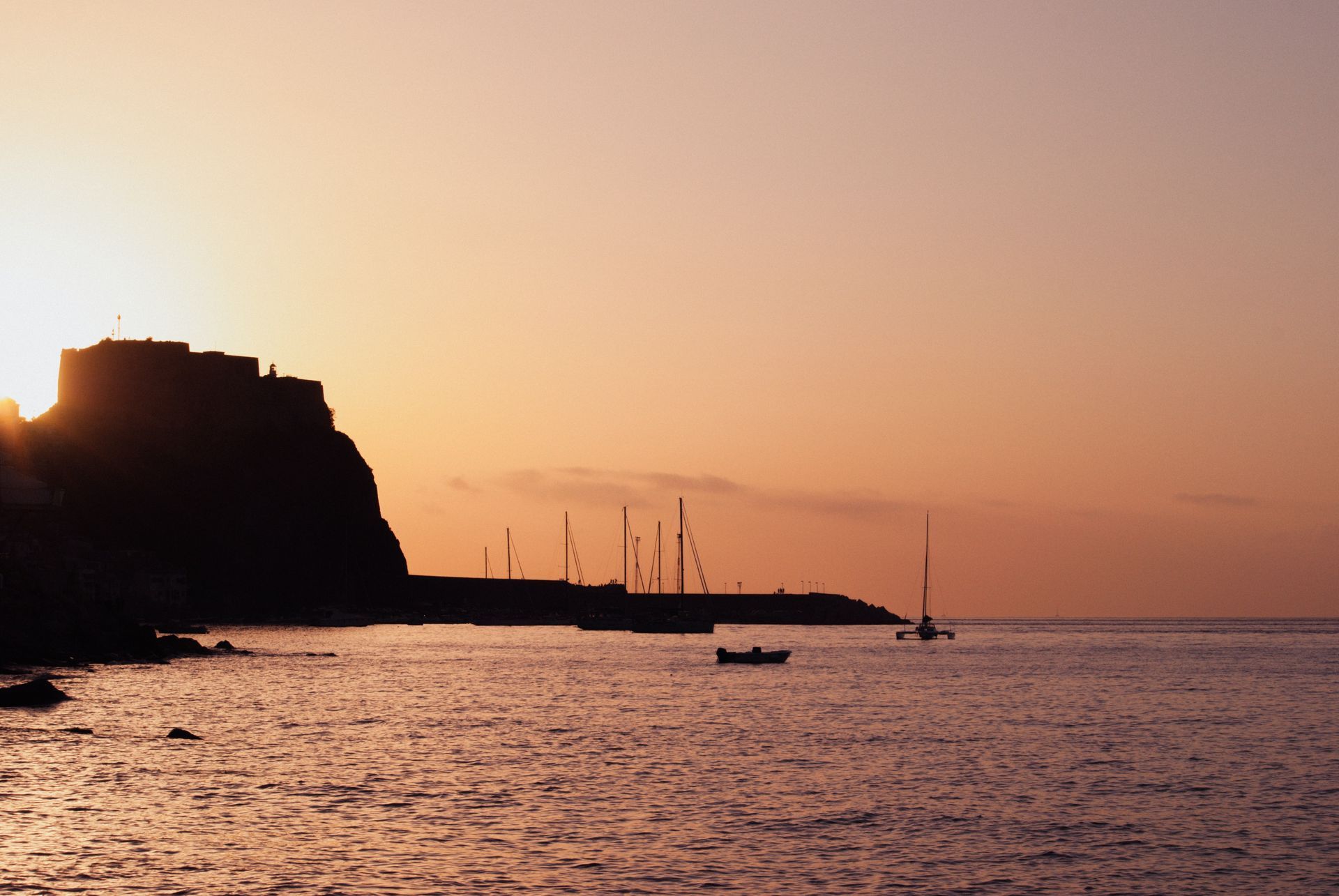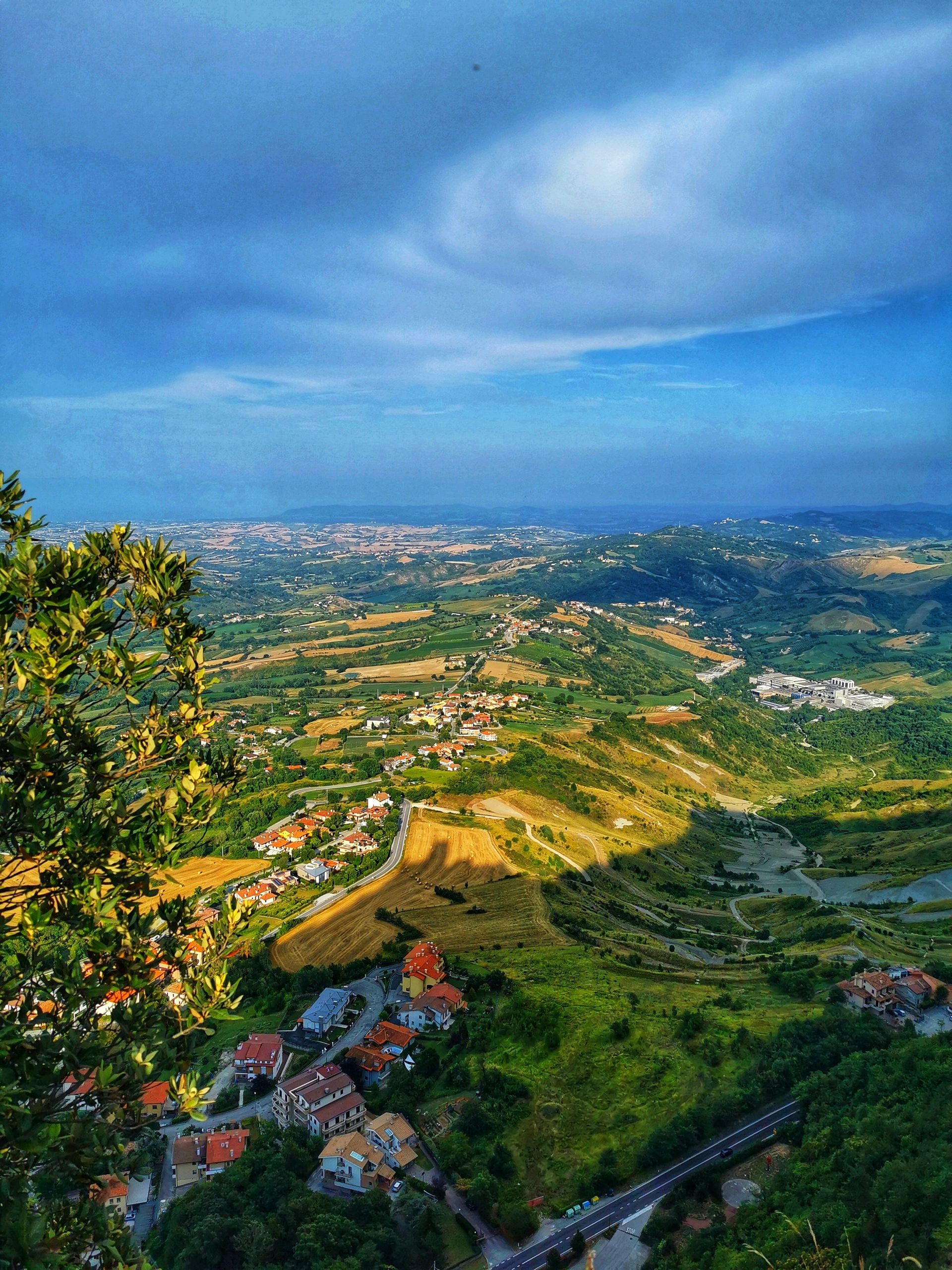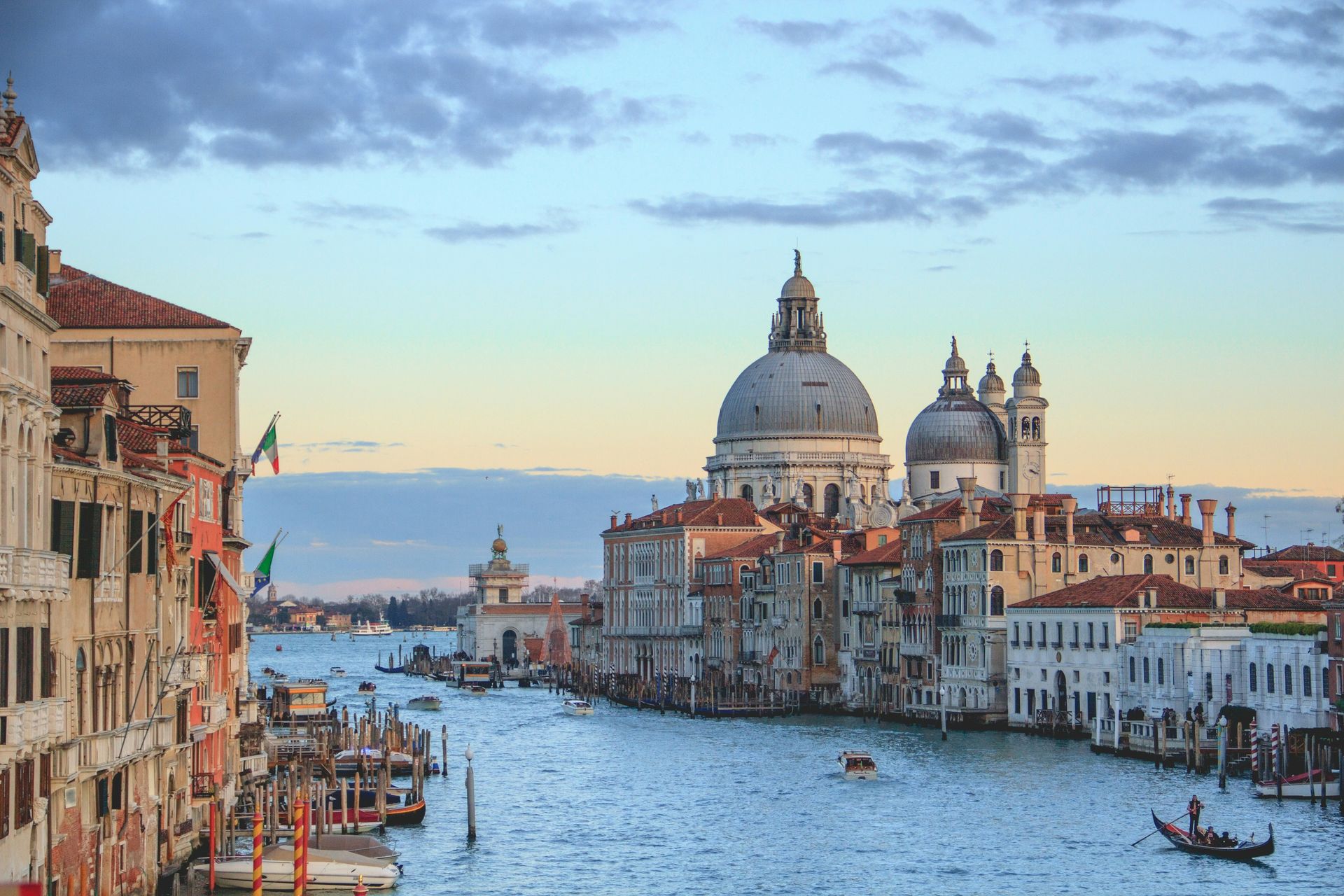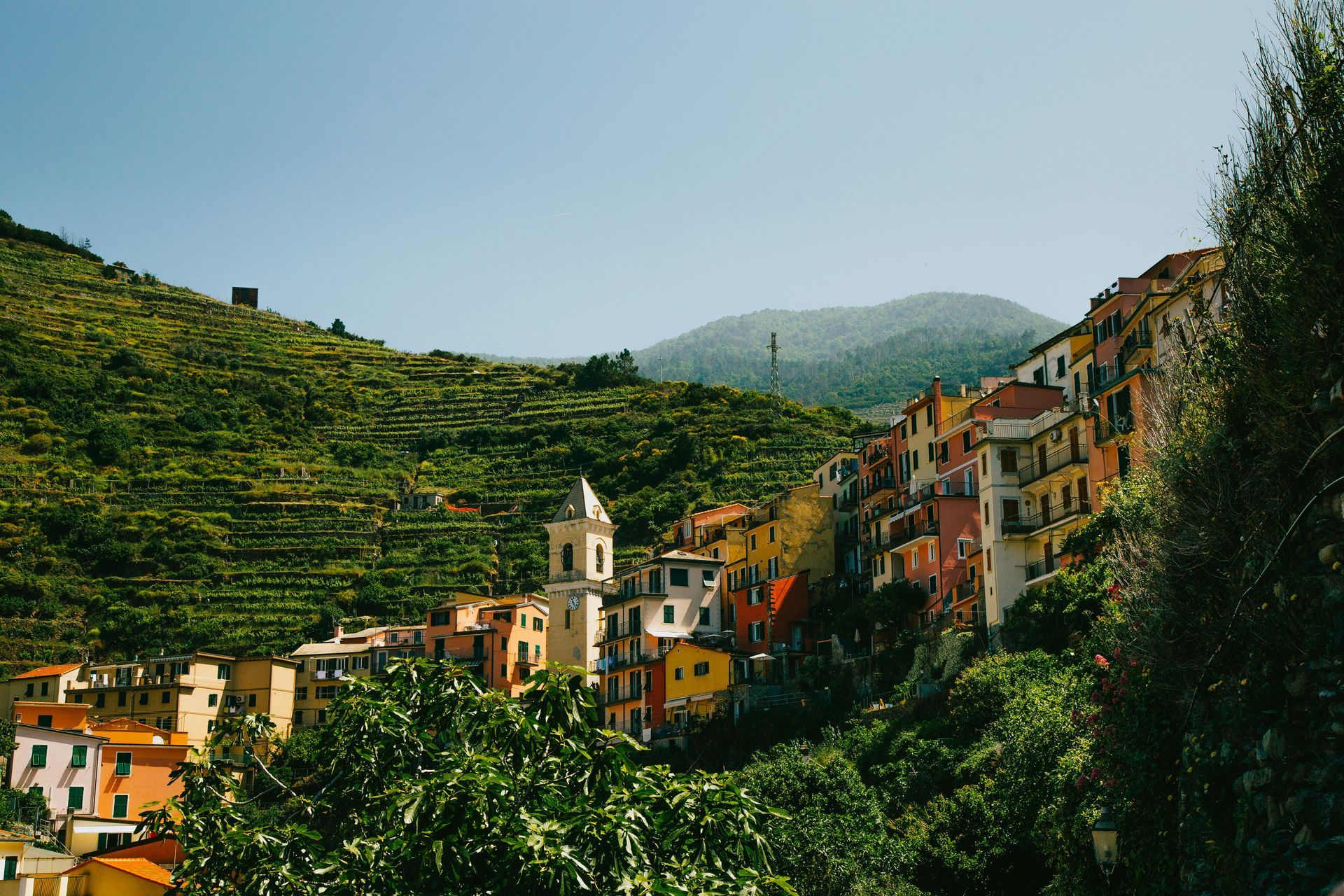Spreading Smile across the globe
Hidden Gems of Northern Italy
Hidden Gems of Italy are a testament to the country's diverse and enchanting beauty, often concealed from the traditional tourist routes. While Italy is celebrated for its iconic cities like Rome, Florence, Venice, and the Amalfi and Cinque Terre coasts, it's the lesser-known destinations that promise a unique journey. These unexplored regions offer travellers a chance to experience Italy's authentic culinary delights, rich historical narratives, and stunning natural landscapes. From the northern reaches to the southern shores, these Hidden Gems of Italy reveal a different facet of this remarkable nation.
Lake Orta - Piedmont
Hidden Gems of Italy come to life at Lake Orta, tucked away near the Swiss border in the heart of Piedmont. This hidden paradise often evades the spotlight compared to its more famous counterparts like Lake Como and Lake Garda. The historic town of Orta San Giulio, with its Baroque and Medieval architecture, cobbled streets, and idyllic Piazza Motta, enchants visitors. The glistening waters of the lake itself invite moments of serenity. What makes Lake Orta truly extraordinary is the mysterious island at its centre—a tranquil sanctuary inhabited by resident nuns.
Treviso - Veneto
Among the Hidden Gems of Italy, Treviso stands as a city in the Veneto region that retains its genuine northern Italian charm. Meandering through its narrow cobbled lanes, picturesque canals, and medieval city walls feels like a step back. Positioned on the fringes of the renowned Prosecco wine region, Treviso provides a delightful excuse for an aperitivo with a glass of Italy's renowned sparkling Prosecco.
Aosta Valley
Nestled among the bordering landscapes of Switzerland and France, the Aosta Valley showcases breathtaking alpine scenery, perched castles, and traditions that thrive throughout the year. When spring and summer arrive, the region's walking trails entice explorers. This season also brings lively festivals that celebrate folk traditions that date back to medieval times. Be sure to savour the local cheese Fontina, a culinary delight that embodies the spirit of this Hidden Gem of Italy.
Alba - Piedmont
Alba, a sought-after destination among Italy's hidden gems, is situated in the vineyards of the Langhe Hills. Once adorned with a hundred towers, Alba exudes a charming rural ambience. It's renowned for its autumn truffle festival, a gastronomic event that captures the essence of the region. Alba is also celebrated for its dark chocolate, hazelnut groves, white truffles, and prestigious wineries. It's from this very region that the sought-after Barolo wine originates.
Camogli - Liguria
Camogli, a typical and vibrant Italian seaside village on the Ligurian Riviera di Levante, perfectly embodies the spirit of the Hidden Gems of Italy. Towering, brightly painted houses dominate the town, and it has become a magnet for visitors seeking pristine beaches, Ligurian cuisine, the rustic fishing marina, Italian culture, and a tranquil natural setting. Camogli has earned its reputation for culinary excellence, focusing on fish and seafood, particularly anchovies and tuna, as well as the iconic pesto sauce made from basil and pine nuts.
Brescia - Lombardy
Hidden Gems of Italy often come alive through history, and Brescia is no exception. In this small city, history unfolds through a tapestry of architectural styles, spanning Roman, Medieval, Renaissance, Baroque, and even Art Deco. Walking through Brescia feels like a journey through time, and a visit to the captivating Piazza della Loggia, framed by a stunning Venetian-style palace at its heart, is a must for history enthusiasts.
Trieste
Trieste is a refreshingly unique destination, an Italian city positioned near the Slovenian border with its dialect that's a delightful blend of Austrian-German, Greek, Croatian, and Italian. Trieste's neoclassical waterfront is a sight to behold, with its marina brimming with stylish, glimmering yachts. The city's offerings include clear blue skies, expansive sandy beaches, city lidos, and the surrounding vineyards. Trieste is a Hidden Gem of Italy that belongs on every traveller's Northern Italian itinerary.
Modena - Emilia-Romagna
Modena is famed for its Hidden Gems of Italy, including balsamic vinegar, Luciano Pavarotti, the Romanesque cathedral, and the nearby Ferrari museum. Beyond these illustrious attractions, Modena reveals a treasure trove of remarkable restaurants. Massimo Bottura's Osteria Francescana has twice earned a place among the world's top 50 eateries, showcasing the culinary excellence of this Hidden Gem. While in Modena, don't miss the chance to savour local specialities like stuffed tortellini and sparkling Lambrusco wine, the perfect complement to your gastronomic journey.
Chiusa / Klausen - South Tyrol
Chiusa, also known as Klausen, is one of Italy's most picturesque villages. It is situated on the banks of the Isarco River in the South Tyrolean region near the Austrian border. Chestnut groves, green fields, vineyards, and farmsteads surround the town. In the village itself, visitors are captivated by narrow alleyways, coats of arms, large bay windows, crenellated facades, and the two main squares.
Ravenna - Emilia-Romagna
Ravenna offers a treasure trove of experiences among the Hidden Gems of Italy. This city is a feast for the senses, with its diverse offerings of food, music, art, culture, history, beaches, wine, and mosaics. Ravenna is home to eight UNESCO-listed sites, making it a must-visit for history and art enthusiasts. It's also known for its two-month-long music festival, Dante Alighieri's tomb, local culinary delights, nearby beach resorts, and the opportunity to explore pinewood forests. The city's fame is derived from its stunning mosaics, dating from the fifth and sixth centuries, scattered throughout the town.
In conclusion, Italy's Hidden Gems invite you to embark on a journey less travelled, where the rich tapestry of history, diverse cuisine, and breathtaking landscapes come to life. These lesser-known destinations provide an authentic Italian experience, away from the bustling crowds, revealing the nation's soul in its purest form. Explore these Hidden Gems to uncover Italy's hidden treasures.
Hidden Gems of Central Italy
Hidden Gems of Italy beckon the adventurous traveller to explore the lesser-known treasures that this remarkable country holds. From the picturesque valleys of Tuscany to the medieval charm of Umbria, the mysterious landscapes of Molise, and the architectural wonders of San Gimignano, these destinations promise unforgettable experiences.
Garfagnana - Tuscany
The Garfagnana region is a hidden gem in the beautiful Tuscan valley north of Lucca. It is crossed by the Serchio River, and the landscape is characterized by fertile greenery, rugged mountains, and charming villages. Outdoor activities such as hiking, walking, and mountain biking are enjoyed by many people in this area. Garfagnana is home to several one-of-a-kind attractions, including a ghost town, a wind cave, and the Devil's Bridge at Borgo a Mozzano.
Gubbio - Umbria
Umbria hides many treasures, and a particular favourite among Hidden Gems of Italy is the Medieval hilltop town of Gubbio. Gubbio, a city with a history dating back over 2,000 years, is a maze of cobbled streets and stone buildings that have been perfectly preserved. Visitors can take a cable car to the summit of Mount Ingino to enjoy panoramic views of the surrounding area. In addition, Gubbio hosts Italy's oldest event, the Corsa dei Ceri, in which teams race through the streets carrying massive wooden candles.
Molise
Molise is Italy's second-smallest region and one of its best-kept secrets. Hidden Gems of Italy are plentiful here. The picturesque town of Agnone is renowned for its artisanal bells, produced by the oldest family-run bell foundry in the world. Meanwhile, Campobasso, the regional capital, boasts a stunning medieval old town. Molise offers a captivating mix of historical charm and natural beauty, with rugged mountains, rolling hills, and pristine beaches along the Adriatic coast.
San Gimignano - Tuscany
Nestled in the heart of Tuscany, San Gimignano boasts medieval architecture and, of course, its famous towers. The town's historic centre is a UNESCO World Heritage site, known for its fourteen stone towers that once symbolised wealth and power. San Gimignano offers a glimpse into medieval Tuscany, with well-preserved streets and squares that transport visitors to another time. Besides the towers, make sure to explore the Collegiate Church and indulge in the local Vernaccia wine, a crisp white wine produced in the region.
Spello - Umbria
Another gem in the heart of Italy, Spello enchants visitors with its winding medieval streets and stunning floral displays. Known as the "Città Infiorata" or "flower town," Spello hosts the Infiorata festival, during which the streets are carpeted with intricate flower petal designs. This event occurs in early June and is a magnificent spectacle. Outside of the festival, Spello's charm continues with its well-preserved historic centre and beautiful churches.
Trulli of Alberobello - Apulia
Apulia, or Puglia, is famous for its unique trulli houses, and Alberobello is the epicentre of this architectural marvel. These whitewashed conical homes are a UNESCO World Heritage Site that offers a glimpse into the region's history. Visitors can even stay in trulli that have been converted into accommodations, providing a truly immersive experience.
Norcia - Umbria
Nestled in the Sibillini Mountains, Norcia is renowned for its gastronomy. This charming town produces exceptional cured meats, particularly prosciutto and salami. For food enthusiasts, Norcia is a true Hidden Gem of Italy. Explore local shops, taste the region's specialities, and visit the beautiful town square. Nature enthusiasts will also find hiking trails and natural beauty in the nearby Monti Sibillini National Park.
Montefalco - Umbria
Montefalco is often called the "Balcony of Umbria" for its stunning views over the surrounding valley. This charming town is also known for its wine, particularly Sagrantino, one of Italy's most robust red wines. Montefalco's medieval centre is picturesque and hosts several churches with remarkable frescoes, making it a cultural and gastronomic gem.
Castelluccio di Norcia - Umbria
High in the Sibillini Mountains, Castelluccio di Norcia is a quaint village known for its stunning wildflower blooms in late spring and early summer. The surrounding plateau becomes a colourful tapestry, attracting photographers and nature enthusiasts. Besides the flowers, visitors can enjoy hiking and take in the breathtaking scenery. Hidden Gems of Italy like Castelluccio di Norcia provide a unique connection to nature and the changing seasons.
In the heart of Italy, a treasury of Hidden Gems awaits the intrepid traveller. From the mysterious ghost town of Garfagnana to the ancient charms of Gubbio, the enchanting landscapes of Molise, and the medieval splendours of San Gimignano, these lesser-known destinations reveal Italy's diverse beauty and rich history. Journey through the tranquil streets of Spello, marvel at the unique trulli houses in Alberobello, savour the culinary delights of Norcia, and bask in the vibrant blooms of Castelluccio di Norcia. These Hidden Gems of Italy promise an unforgettable adventure in a land of timeless wonder.
Hidden Gems of Southern Italy
Italy, a land of rich history, captivating art, and exquisite cuisine, is known for its iconic cities and world-famous landmarks. Despite the tourist-filled streets and crowded piazzas, the country holds many hidden gems—lesser-known destinations that offer a more intimate and authentic experience. These places, tucked away in various corners of Italy, are a testament to the nation's diverse and enchanting beauty, waiting to be explored by the discerning traveller. From medieval towns perched atop hills to charming coastal villages and ancient archaeological sites, the Hidden Gems of Italy promise unique adventures and unforgettable memories.
Civita di Bagnoregio - Lazio
Civita di Bagnoregio is often called the "Dying Town" because of its gradual erosion over the centuries. This medieval village is perched on a hilltop and can only be reached by a long footbridge. It's a unique destination, seemingly suspended in time, and is the perfect Hidden Gem for history buffs and photographers.
Matera - Basilicata
Matera, known for its cave dwellings, is one of Italy's most intriguing and unique destinations. The Sassi di Matera, a historic cave settlement, is a UNESCO World Heritage Site. Matera is gaining popularity but still qualifies as one of the Hidden Gems of Italy. Touring this labyrinth of stone-carved rooms and narrow streets offers an incredible historical journey.
Sperlonga - Lazio
Sperlonga is a charming coastal town characterized by its pristine beaches, winding alleys, and picturesque piazzas. Nestled between Rome and Naples, Sperlonga is often overlooked by travellers. A visit here reveals a relaxed and authentic Italian atmosphere, perfect for strolls and seaside relaxation. Take advantage of the Grotto of Tiberius, a cave once used as the emperor's villa and now a museum.
Paestum - Campania
The ancient ruins of Paestum, originally a Greek colony known as Poseidonia, provide an extraordinary window into Italy's history. The temples are exceptionally well-preserved, ranking among the best-preserved in the world. Paestum is also home to a fascinating archaeological museum that displays artefacts from the site. Enjoy a step back in time amid the Hidden Gems of Italy.
Castro - Apulia
Castro, a picturesque coastal town, boasts a historic centre perched on a rocky outcrop. Visitors can explore ancient churches, fortifications, and a charming harbour. Castro also has sea caves that can be explored by boat. The region's cuisine is a seafood lover's paradise, making this town a Hidden Gem for food enthusiasts as well.
Scilla - Calabria
Scilla, an idyllic coastal village in Calabria, offers stunning sea views and hidden beaches. The town is known for the Ruffo Castle, which dominates the landscape, and the legendary sea monster Scylla from Greek mythology. The charming village is a serene and lesser-known alternative to some of the more crowded Italian seaside destinations.
San Marino
San Marino is a microstate surrounded by Italy and is one of the world's oldest republics. It's a destination that's often missed, making it a true Hidden Gem. San Marino boasts dramatic mountaintop views, historic architecture, and unique attractions like the Guaita Tower and the Palazzo Pubblico. For collectors, the country is also known for its beautiful stamps and coins.
Conclusion
Discovering the Allure of Hidden Gems of Italy
Hidden Gems of Italy offers travellers an authentic experience, far removed from the tourist-packed cities and famous landmarks. These lesser-known destinations unravel the genuine charm, culture, history, and culinary wonders that make Italy an endlessly fascinating country to explore. From the mountains of the North to the coasts of the South, each region holds its treasures, waiting to be discovered by those who venture off the beaten path. By exploring the Hidden Gems of Italy, you can craft a unique and unforgettable journey that deepens your appreciation of this incredible country. Plan your trip carefully, and you will be rewarded with the beauty, history, and flavours that characterize these enchanting places.
Sustainable Travel in Italy:
Eco-Friendly Initiatives and Responsible Tourism Tips
Embarking on a journey through Italy offers more than just a typical tourist experience—it's an opportunity to embrace sustainable travel practices and contribute to the preservation of Italy's natural beauty and cultural heritage. Sustainable travel in Italy is about exploring this magnificent country while minimizing our impact on the environment and supporting local communities.
From the snow-capped peaks of the Alps to the sun-kissed shores of the Mediterranean, Italy boasts a diverse landscape teeming with biodiversity and natural wonders. However, as tourism continues to flourish, it's essential to adopt eco-friendly initiatives and responsible tourism practices to ensure the longevity of these cherished destinations.
In this guide, we'll explore a range of sustainable travel options in Italy, from eco-friendly accommodations and transportation to ethical dining experiences and community-based tourism initiatives. Whether you're hiking through the scenic countryside, exploring historic cities, or lounging on pristine beaches, there are plenty of opportunities to tread lightly and leave a positive impact on the places you visit. Join us as we discover the beauty of Italy while embracing sustainability and responsible travel principles.
Sustainable Travel in Italy: How to Be a Responsible Tourist
Sustainable travel in Italy isn't just about enjoying the sights; it's about being mindful of the impact we have on the environment and local communities. Here are some tips on how to be a responsible tourist while exploring this beautiful country:
1.Opt for eco-conscious lodging:
Seek out hotels, guesthouses, or eco-resorts committed to sustainable practices like energy efficiency, waste reduction, and supporting local suppliers.
2. Embrace local enterprises:
Choose locally operated eateries, shops, and excursion providers to bolster the community economy and diminish carbon footprints linked to major corporations.
3. Cut down on waste:
Bring along reusable water bottles, shopping bags, and utensils to curb single-use plastic. Dispose of rubbish responsibly and engage in recycling schemes where feasible.
4. Be energy-aware:
Conserve energy by switching off lights, air conditioning, and electronics when not in use. Keep showers brief and minimize water usage to preserve resources.
5. Show regard for wildlife and the environment:
Admire wildlife from a distance, refrain from feeding or touching animals, and adhere to designated paths to minimize disruption to habitats.
6. Trim transportation emissions:
Opt for walking, biking, or utilizing public transit whenever feasible. Consider carpooling or renting an electric vehicle to reduce carbon emissions during your travels.
By incorporating these sustainable travel practices into your itinerary, you can help protect Italy's natural and cultural heritage for future generations to enjoy.
What is Sustainable Tourism in Italy?
Sustainable tourism practices in Italy encompass a spectrum of strategies aimed at mitigating the adverse effects of tourism on the environment, local societies, and cultural heritage, while amplifying benefits for all stakeholders. At its essence, sustainable travel in Italy centers on safeguarding the nation's natural splendor, cultural legacy, and biodiversity for posterity's enjoyment.
Environmental conservation stands as a pivotal aspect of sustainable tourism in Italy. This entails curtailing carbon emissions, minimizing waste generation, conserving water and energy, and safeguarding delicate ecosystems and wildlife habitats. Numerous eco-conscious accommodations and tour operators in Italy champion sustainability by adopting measures such as recycling, leveraging renewable energy sources, and endorsing conservation endeavors.
Furthermore, sustainable tourism in Italy underscores the significance of bolstering local communities and economies. This encompasses advocating for equitable wages and labor conditions for local inhabitants, procuring goods and services from nearby sources, and channeling resources into community development initiatives.
By supporting small businesses, artisans, and farmers, travelers can contribute to the economic vitality of Italy's rural and urban areas while fostering cultural exchange and preserving traditional practices.
Overall, sustainable tourism in Italy is about fostering a deeper connection with the country's natural and cultural heritage while ensuring that tourism benefits both present and future generations in a responsible and ethical manner.
Respect places and Italy's cultural heritage
Respecting places and Italy's cultural heritage is a fundamental aspect of sustainable travel. When exploring Italy's rich tapestry of historical sites, monuments, and cultural landmarks, it's essential to do so with reverence and mindfulness to preserve these treasures for future generations.
One way to show respect for Italy's cultural heritage is by following designated pathways, staying on marked trails, and refraining from climbing or touching fragile structures. Many historical sites, such as ancient ruins and Renaissance palaces, are susceptible to damage from human interaction, so it's crucial to observe posted rules and regulations to minimize impact.
Furthermore, sustainable travel in Italy involves respecting local customs, traditions, and way of life. Whether visiting a small village in Tuscany or a bustling city like Rome, travelers should strive to engage respectfully with locals, support local businesses, and adhere to cultural norms and etiquette.
Another aspect of respecting Italy's cultural heritage is supporting efforts to preserve and protect historical sites and monuments. This may involve volunteering for conservation projects, donating to heritage preservation organizations, or participating in guided tours that promote responsible tourism practices.
Ultimately, by showing respect for places and Italy's cultural heritage, travelers can contribute to the sustainability of tourism in Italy while fostering a deeper appreciation for the country's rich history and cultural legacy.
Exploring Cities on Foot – A Sustainable Approach
Exploring cities on foot is not only a sustainable approach but also a rewarding way to experience the vibrant culture and unique charm of Italy's urban destinations. By opting to walk instead of relying on motorized transportation, travelers can reduce their carbon footprint, minimize traffic congestion, and immerse themselves in the sights, sounds, and flavors of Italy's bustling streets.
Strolling enables travelers to uncover hidden treasures and lesser-known attractions that might not be reachable by car or public transit.
From picturesque alleyways and historic neighborhoods to bustling markets and lively piazzas, every corner of Italy's cities offers a new adventure waiting to be uncovered.
Moreover, exploring cities on foot promotes physical activity and health while providing opportunities for spontaneous interactions with locals and fellow travelers. Whether wandering through the narrow streets of Venice, strolling along the Arno River in Florence, or meandering through the ancient alleyways of Rome, walking allows travelers to engage with their surroundings in a meaningful and sustainable way.
In addition to walking, travelers can also consider renting bicycles or using public transportation options such as trams, buses, and trains to further reduce their environmental impact while exploring Italy's cities. By adopting sustainable travel practices, travelers can relish a more genuine and eco-conscious experience while aiding in the safeguarding of Italy's urban heritage for generations to come.
Benefits of Sustainable Travel for Travelers
Sustainable travel offers a myriad of benefits for travelers, making it not only an environmentally responsible choice but also a rewarding and enriching experience. Firstly, sustainable travel allows travelers to connect more deeply with the destinations they visit by fostering a greater appreciation for local cultures, traditions, and natural landscapes. By engaging in responsible tourism practices, such as supporting local businesses, respecting cultural heritage sites, and minimizing environmental impact, travelers can forge meaningful connections with the places they explore.
Moreover, sustainable travel often leads to more authentic and immersive experiences, as travelers seek out off-the-beaten-path destinations, participate in community-based tourism initiatives, and interact with locals in meaningful ways. This can lead to more fulfilling and unforgettable travel encounters that extend beyond the usual tourist destinations.
Additionally, sustainable travel promotes personal well-being by encouraging physical activity, outdoor exploration, and a deeper connection with nature. Whether hiking through scenic landscapes, cycling along picturesque trails, or participating in eco-friendly tours and activities, sustainable travel offers opportunities for travelers to rejuvenate their mind, body, and spirit while exploring the world around them.
Furthermore, by choosing sustainable travel options, travelers can feel a sense of pride and satisfaction in knowing that they are making a positive difference in the world. Whether it's reducing their carbon footprint, supporting local conservation efforts, or contributing to the preservation of cultural heritage, sustainable travel empowers travelers to be responsible stewards of the planet while enjoying all the wonders that it has to offer.
Green Tourism or Ecotourism in Italy
Green tourism, also known as ecotourism, is a growing trend in Italy that emphasizes responsible travel practices, environmental conservation, and sustainable development. As one of the most visited countries in the world, Italy offers a wealth of natural beauty, cultural heritage, and diverse ecosystems that attract millions of travelers each year. Sustainable travel initiatives in Italy aim to protect these assets while promoting tourism activities that minimize environmental impact and support local communities.
A fundamental tenet of eco-tourism in Italy involves safeguarding natural habitats and wildlife. From the pristine beaches of Sardinia to the rugged mountains of the Dolomites, Italy's diverse landscapes are home to a rich array of flora and fauna that must be safeguarded for future generations. In Italy, ecotourism endeavors prioritize responsible wildlife observation, habitat rehabilitation, and sustainable land management methods to secure the lasting preservation of these invaluable ecosystems.
Additionally, green tourism in Italy prioritizes cultural preservation and community engagement. Travelers are urged to endorse local artisans, cultural landmarks, and traditional crafts to aid in safeguarding Italy's abundant cultural legacy while fostering the economic prosperity of local communities. By embracing sustainable travel practices, visitors can enjoy all that Italy has to offer while leaving a positive impact on the environment and supporting the country's efforts towards a more sustainable and responsible tourism industry.
Green Tourism or Ecotourism by Region in Italy:
What to See and Explore: Liguria, Tuscany, Sardinia, Piedmont, Veneto, Campania and Sicily
Green tourism or ecotourism in Italy offers travelers a wide range of sustainable travel opportunities across various regions, each with its own unique natural landscapes, cultural heritage, and eco-friendly initiatives.
In Liguria, visitors can explore the stunning Cinque Terre National Park, a UNESCO World Heritage Site known for its picturesque coastal villages, hiking trails, and pristine marine environments. Sustainable tourism practices in Liguria focus on preserving the region's biodiversity, promoting eco-friendly accommodations, and supporting local conservation efforts.
Tuscany, with its rolling hills, vineyards, and historic cities, is another popular destination for sustainable travel. Travelers can immerse themselves in the region's rich cultural heritage while supporting organic farms, agriturismos, and eco-friendly wineries that promote sustainable agriculture and responsible tourism practices.
Sardinia offers stunning coastlines, rugged peaks, and ancient ruins, attracting eco-conscious travelers. Sustainable tourism efforts here comprise marine preservation endeavors, eco-conscious lodging, and community-led tourism schemes fostering local culture and traditions.
Piedmont, renowned for its culinary delights and majestic alpine landscapes, offers travelers opportunities for sustainable wine tours, farm stays, and outdoor adventures in the Alps and the countryside.
Veneto, home to the iconic city of Venice and the breathtaking Dolomites, promotes sustainable tourism through initiatives such as responsible waste management, eco-friendly transportation options, and cultural heritage conservation projects.
Campania, known for its historic cities, ancient ruins, and stunning Amalfi Coast, encourages sustainable tourism practices such as waste reduction, energy efficiency, and support for local artisans and traditional crafts.
Sicily, with its diverse landscapes, ancient history, and vibrant culture, offers travelers opportunities for sustainable travel through initiatives such as organic farming, renewable energy projects, and eco-friendly accommodations.
Across these regions, sustainable travel in Italy allows visitors to experience the country's natural beauty and cultural heritage while minimizing their environmental impact and supporting local communities. Whether hiking in the mountains, exploring historic cities, or relaxing on pristine beaches, travelers can embrace eco-friendly practices and contribute to the preservation of Italy's natural and cultural treasures.
Conclusion:
In conclusion, sustainable travel in Italy offers a rewarding and responsible way to explore the country's diverse landscapes, cultural heritage, and local communities. By embracing eco-friendly practices, supporting local initiatives, and minimizing environmental impact, travelers can enjoy authentic experiences while contributing to the preservation of Italy's natural and cultural treasures. Whether hiking in the mountains, exploring historic cities, or relaxing on pristine beaches, sustainable travel allows visitors to leave a positive impact on the places they visit while creating lasting memories.
Things To Do | Travel Information | Local's Favourites






